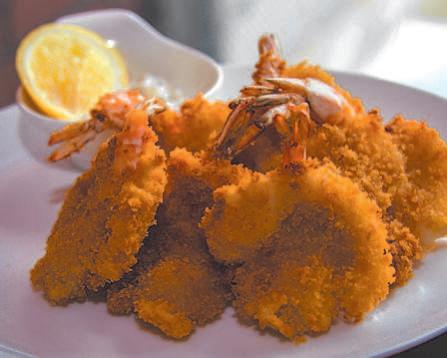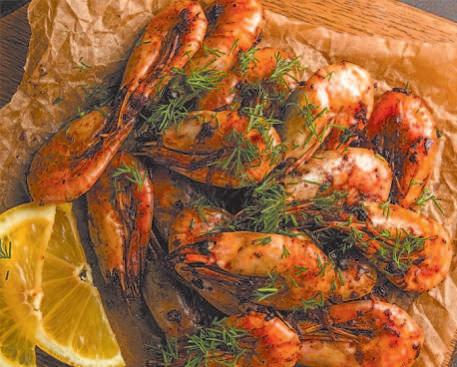






St. Louis’ SANDWICH SCENE

A
Weekend in AUGUSTA
The Evolution of EXCEL BOTTLING
























A





























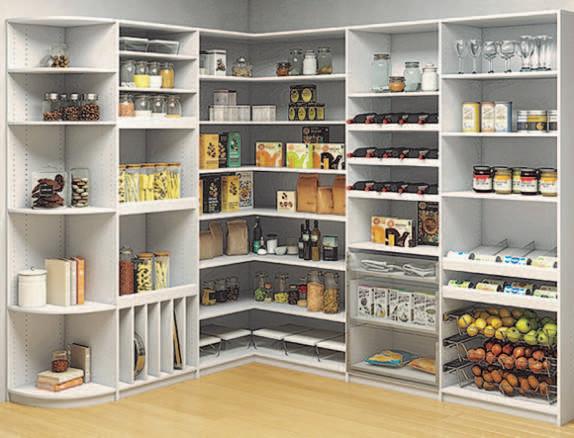

































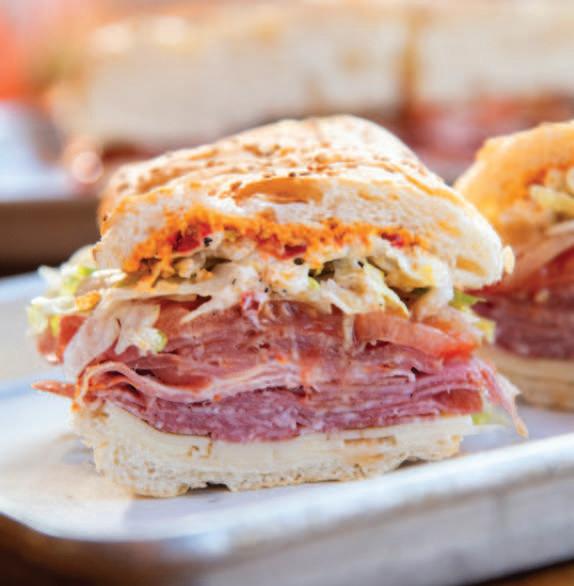




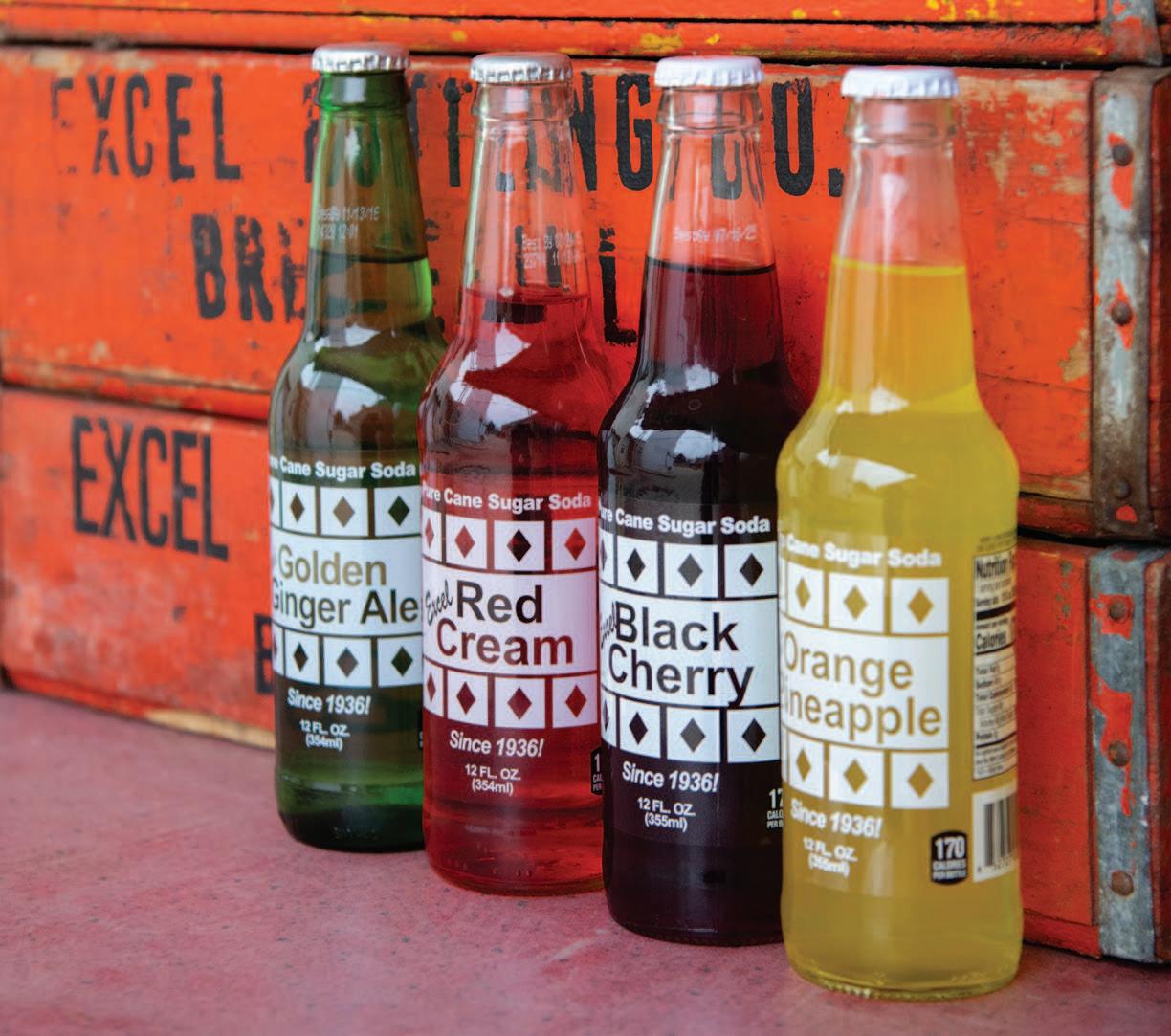




Visit our website to stay connected to food and drink news, explore neighborhood guides and find simple yet stunning recipes. While you’re there, make sure to look for the expanded stories from this quarterly issue. As you flip through these pages, scan the QR codes with your phone camera to read more on our website.

>
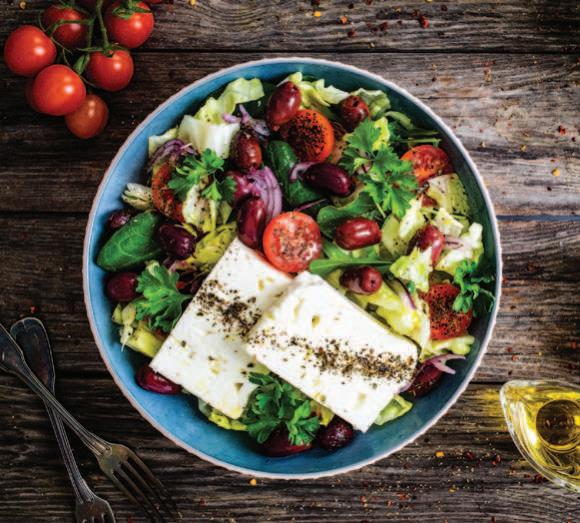
< SIGN UP FOR OUR NEWSLETTERS feastmagazine.com/newsletters





< TRY EASY & ELEVATED RECIPES feastmagazine.com/recipes





Inspired Local Food Culture | St. Louis
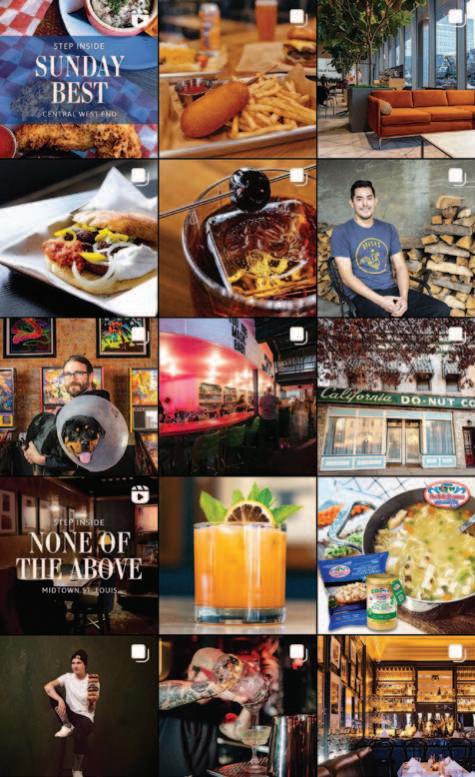

Spring 2024 | Volume 13 | Issue 8
PUBLISHER Ian Caso
Editorial MANAGING EDITOR
Charlotte Renner, crenner@feastmagazine.com
DIGITAL EDITOR
Shannon Weber, sweber@feastmagazine.com
ASSOCIATE EDITOR
Emily Standlee, estandlee@feastmagazine.com
MULTIMEDIA REPORTER
Daniel Puma, dpuma@feastmagazine.com
CONTRIBUTING WRITERS
Mary Andino, Rebecca Davis, Jaylen Heady
Art ART DIRECTOR
Dawn Deane, dawn.deane@feastmagazine.com
ASSISTANT ART DIRECTOR
Laura DeVlieger, ldevlieger@laduenews.com
GRAPHIC DESIGNER
Chris Oth, coth@laduenews.com
CONTRIBUTING PHOTOGRAPHERS
Judd Demaline, Christina Kling-Garrett, Jennifer Silverberg
CONTRIBUTING ILLUSTRATOR
Jillian Kaye
Sales
VICE PRESIDENT OF SALES
Kevin Hart, khart@stlpostmedia.com
Contact Us
Feast Magazine, 901 N. 10th St. St. Louis, MO 63101 314.475.1260 | feastmagazine.com
Distribution



stltoday.com/subscribe to have Feast delivered to your home, or pick up a copy of the spring edition in the March 3 issue of the Post-Dispatch.









Dear reader,
Spring has always been my favorite season – my mood steadily rises as each new flower blossoms and budding leaves shyly peek out from tree branches. After months of hearty stews and roasts to get me through the winter, I welcome the splash of green on my plate that spring brings and the emergence of new life that comes along with it.
It’s a time of renewal all around, and that notion extends to your kitchen. As you’re scheming up potential spring cleaning hacks, take the time to zero in on your meal planning routine. On p. 30, digital editor Shannon Weber provides a few fresh recipes to start you off along with tips and tricks from local meal prep experts. And when we find ourselves on the go without our trusty Tupperware, we turn to some of the delis around St. Louis we can’t live without (p. 26).









As you flip through these pages, you’ll discover articles that delve into the stories behind seasonal ingredients. Take rhubarb, for instance: Is it a vegetable? Is it only useful in dessert format? Multimedia reporter Daniel Puma takes on the mystery with advice on how to use this enigmatic ingredient on p. 28.





While you’re busy exploring new ingredients, keep that adventurous spirit alive with a weekend trip to Augusta, Missouri. The small town is known for its wine country appeal but has much more to offer, all in a walkable haven alongside the Missouri River Valley. Acclaimed restaurateur Phillip Day of Root Food & Wine shows us around his stomping grounds on p. 24.

On the other side of the river, associate editor Emily Standlee takes us behind the curtain of Excel Bottling Co. (p. 14), a St. Louis classic known for its nostalgic glass bottles and pure cane sugar sodas. Meet the new(er) kids on the beverage block on p. 20, where Switchgrass Spirits celebrates its hard-earned Bottled-in-Bond distinction – a merit that exemplifies prestige and honor in the distilling world.

To close out the issue, meet Jonathan Lorentzen of Farm Spirit, who will spend the season at Such and Such Farm helping out with the farm dinners we’ve all fallen in love with (p. 48). I wish you all a spring full of delicious discoveries and hope this issue gives you a few ideas of where to start.











 Cheers, Charlotte Renner
Cheers, Charlotte Renner











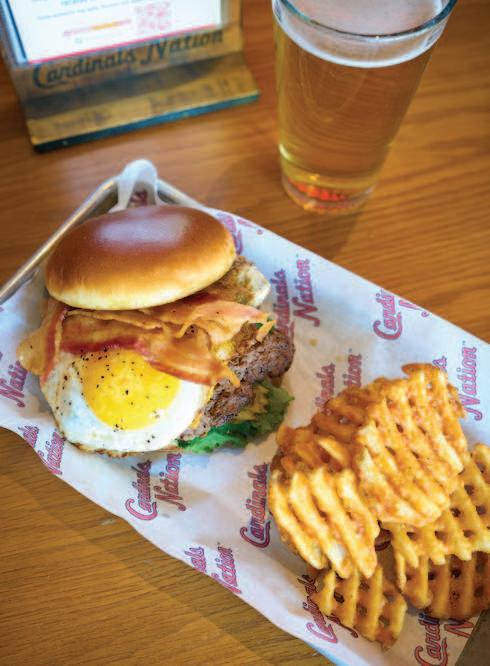


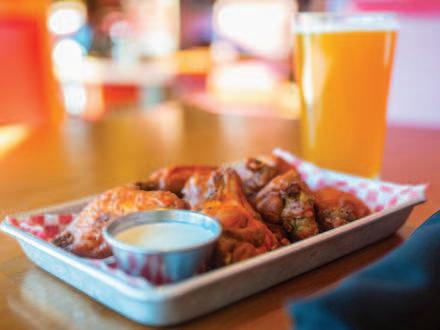



The best thing about Frazer’s is its ability to do upscale dining without taking itself too seriously. One example of this is the Sun’s Out, Guns Out cocktail (gin, Aperol, St. Germain, orange, lemon, rhubarb and dry Cava), which arrives at your table ensconced in a mini inflatable pool float.
At a restaurant known for its incredible treatment of fish, Sado’s miso ginger salad might be the most inventive thing on the menu. It’s a gastronomic mixture of gem lettuce, candied cashews, lotus root and sugar snap peas dressed in a bright and umami-laden dressing served over a jalapeño edamame purée.

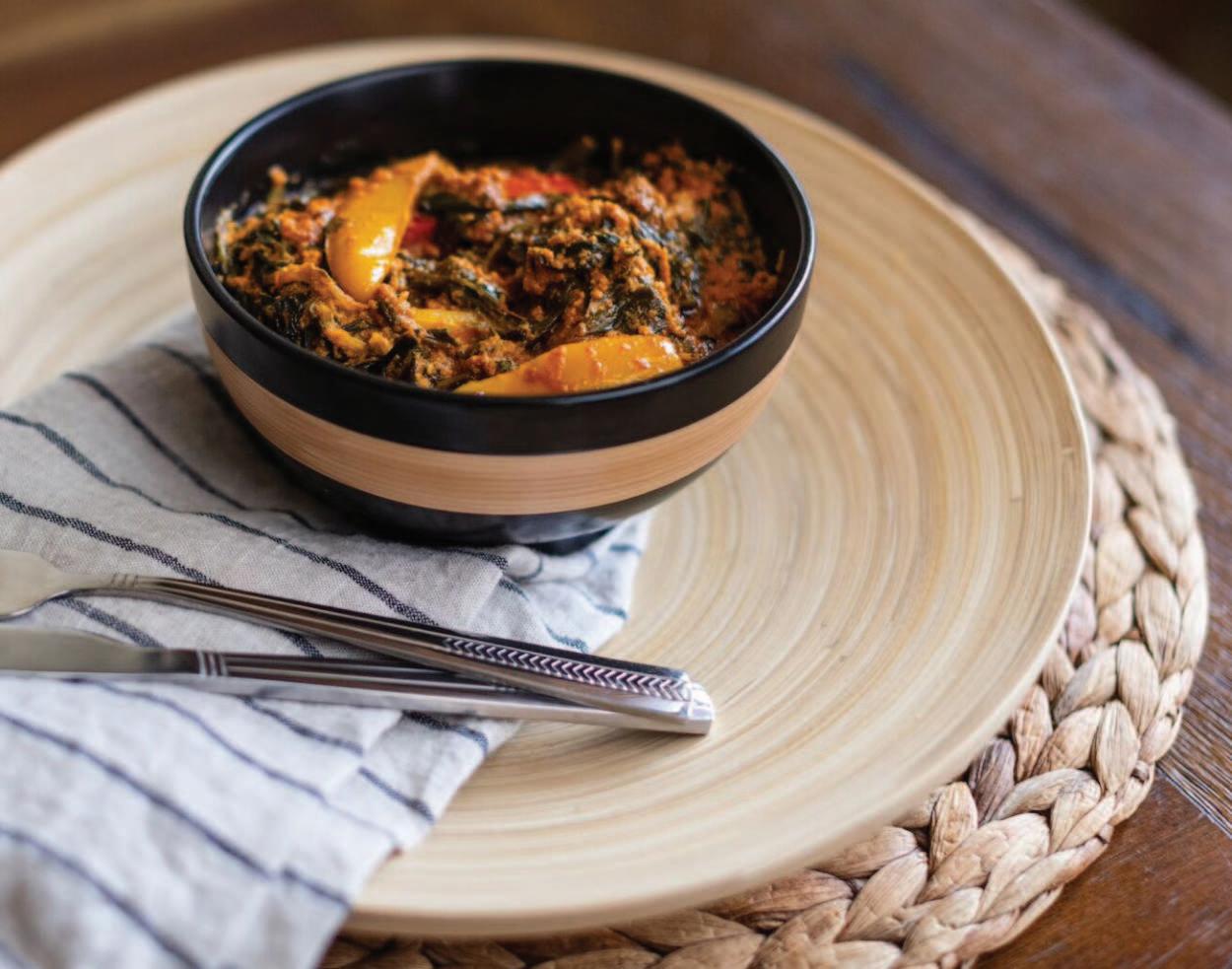
This West African dish is a tomato-based stew that’s slowcooked with roasted pumpkin seeds and spinach. Jam-packed with rich and homey flavors, Fufu n’ Sauce’s food truck serves a vegetarian and beef version. The stew is paired with fufu, a plantain and yam flour-based starch, eaten as a traditional scooping accompaniment.
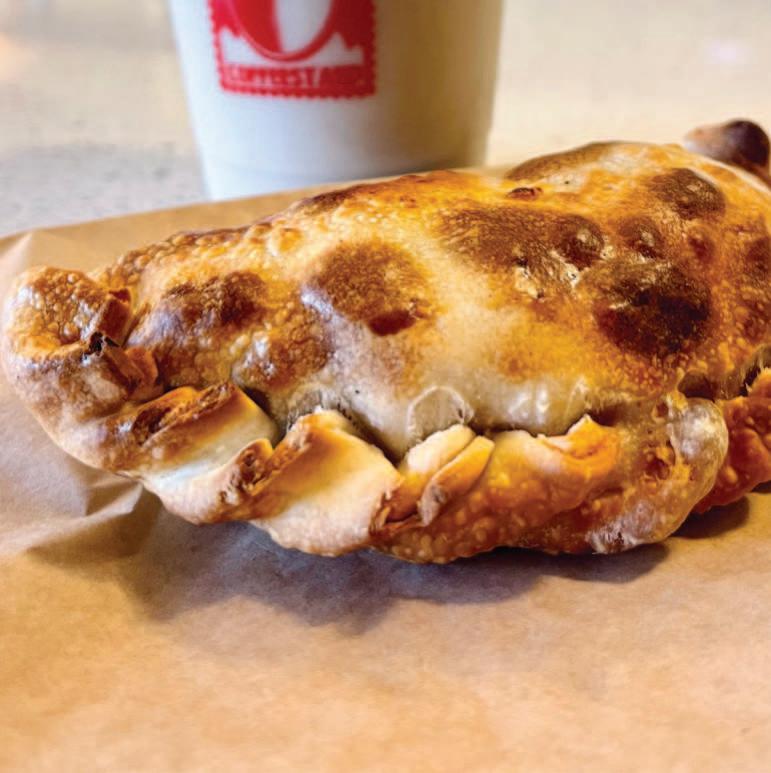
Whether we’re at Coffeestamp’s original location in Fox Park or hanging out at the Grounds for Change location at Washington University in St. Louis (the perfect place to work remotely), we’re grabbing the Napolitana empanada. There’s something about the combination of roasted cherry tomatoes, melty mozzarella and fresh basil that gets us every time.

If you’re a skeptic when it comes to plant-based meats, Chris Bertke’s Maine Lobster Roll will make you a believer. The simplicity of the sandwich – comprised of a buttered, toasted top-split bun piled high with creamy housemade plant-based lobster salad and topped with scallion and paprika – allows Bertke’s masterful vegan fare to take center stage.











If you’re reading this magazine, you already know how incredible St. Louis’ food scene is – and how much it grows each month. Restaurant concepts are constantly being developed, giving chefs, both old and new, a chance to show off their skills. With this in mind, we selected three stellar new spots already covered in extensive Inside Scoops on our website. Scan each QR code to get the full story on feastmagazine.com.

Situated at the corner of Manchester Road and Sutton Avenue in Maplewood, Missouri, this family-friendly restaurant brings a first-rate list of smash burgers, chicken sandwiches, salads, fries and onion rings to the table alongside draft cocktails and classic milkshakes. The menu is well-edited, with five signature burgers: The Champ (a diner classic at its finest); BBQ Bacon Cheddar; Mushroom Swiss; Jalapeño White Cheddar; and The Fancy Boy, with pickled red onion and signature Champ sauce. There’s also a build-your-own burger option in which customers choose a base protein, bun, and then go wild with a range of toppings that lets them create a masterpiece.
Burger Champ, 2704 Sutton Ave., Maplewood, Missouri, burgerchampstl.com

Ehsani’s Hot Kabob
Chef-owner Hadi Ehsani was once a champion sport fighter; now, he grills up tasty kabobs and other Afghan, Turkish and Iranian dishes in Bevo Mill. The self-taught cook fondly recalls grilling outdoors in Iran with his uncle and dad before taking the lead at large family gatherings. He developed a lasting affinity for the detail-oriented process of marinating the kabobs for days and setting up elaborate charcoal-fueled barbecue pits to cook them to perfection. Dinein guests at Ehsani’s get a taste of this meticulous craft as they’re presented with silver platters brimming with basmati rice, veggies and kabobs, which are removed from skewers in front of them, fresh from the grill.
Ehsani’s Hot Kabob, 4561 Gravois Ave., Bevo, St. Louis, Missouri, 314-328-1302, instagram.com/ehsanis.hotkabob


Perched at the corner of Lockwood and Gore avenues, Madrina offers a modern interpretation of classic midcentury Italian American cuisine in a luxurious setting that recalls the era through every tiny detail. It’s a dream decades in the making from restaurateurs (and good friends) Frank Romano and Stanley Browne, and they’ve aptly put together a dream team staff to help it come to fruition. Madrina means “godmother” in Italian, which is fitting as the restaurant is partly an homage to Romano’s madrina. With slick red leather booths and a polished menu full of antipasti, fresh pasta, Italian desserts and curated wine, Madrina makes you want to settle in and stay awhile.

Madrina, 101 W. Lockwood Ave., Webster Groves, Missouri, 314-963-1976, madrinastl.com



Behind the doors of Balkan Treat Box, acclaimed chef Jennifer Garcia Barrs is hard at work crafting the latest Balkan-inspired creations. Working alongside co-owners Loryn and Edo Nalic, Garcia Barrs brings her West Coast expertise to an acclaimed local favorite, offering up one-ofa-kind recipes polished with her signature Filipino spin. Over the past four years, she has become a force within the St. Louis food community, and she’s most recently helped recipe-develop for the Nalic family’s second concept, Telva at the Ridge.
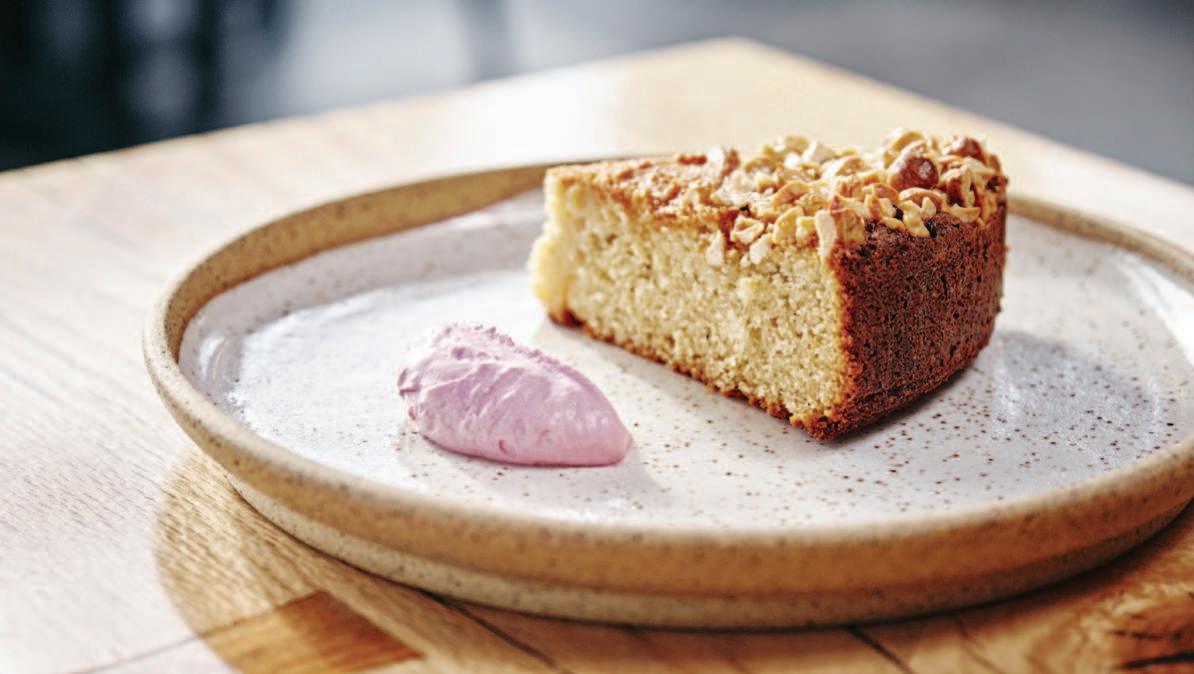
How did you end up working with Balkan Treat Box/ Telva at the Ridge?
I think it was serendipitous. When I first moved here in 2016, I took some time off from the food industry; around the summer of 2019, I decided that I wanted to get my feet wet again. I was having lunch at Union Loafers on my birthday, and Edo Nalic walked in, and I recognized him from a write-up. I struck up a conversation with him and mentioned that I wanted to get back into food. He gave me his wife Loryn’s contact, and we hit it off. I started working at Balkan Treat Box part-time in the fall of 2019.
When it comes to recipe creation, what inspires you?
For me, it’s my life and travel experiences. For example, after college I was able to spend some time in India absorbing the diverse cultures, food, people and landscapes within the country. As a visitor, I experienced different “local” cultures, but I could also see that the art, architecture and foods incorporated the influences of former colonizers and/or neighboring countries.
In what ways does the culinary scene in St. Louis differ from your previous locations?
I worked in Toronto, the San Francisco Bay Area and Los Angeles previously, and I think St. Louis really has a great support system amongst all the people in the food industry. … There exists an excitement on a community level to support locally owned restaurants and other food ventures. Many folks within the St. Louis food and beverage community look out for each other, providing support in every way imaginable. The food community here is a much closer, tight-knit family, and that’s probably due to the size of the city.
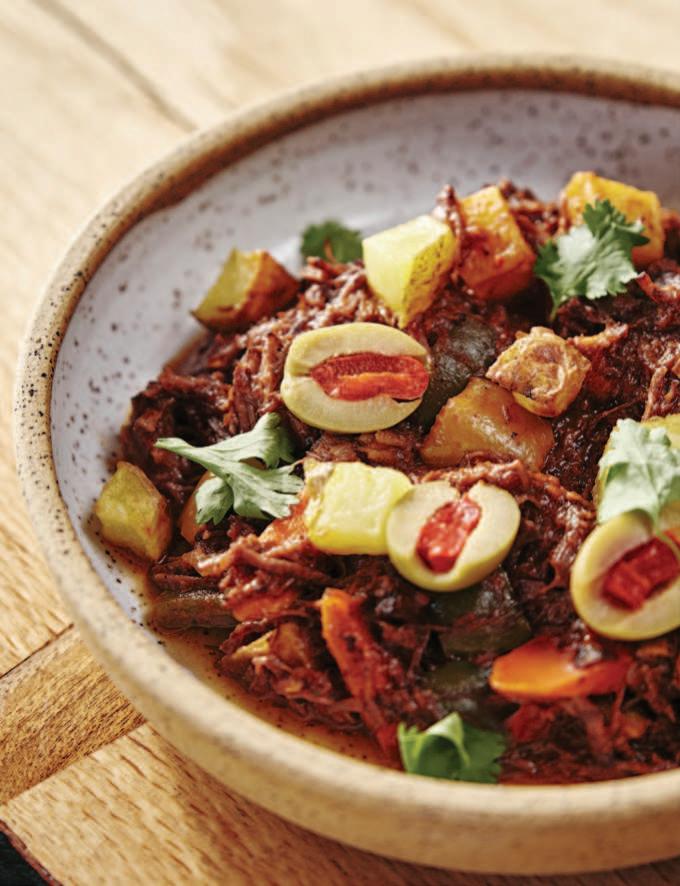
What’s your favorite dish that you’ve made recently?
I’ve been having a lot of fun at Balkan Treat Box doing dessert specials. They’ve been dubbed Jen’s Jars. I’ve also been doing different Basquestyle cheesecakes, and one of my favorite ones that I’ve done recently is ube tahini.
Balkan Treat Box, 8103 Big Bend Blvd., Webster Groves, Missouri, 314-733-5700, balkantreatbox.com
Telva on the Ridge, 60 N. Gore Ave., Webster Groves, Missouri, 314-395-2760, telvastl.com
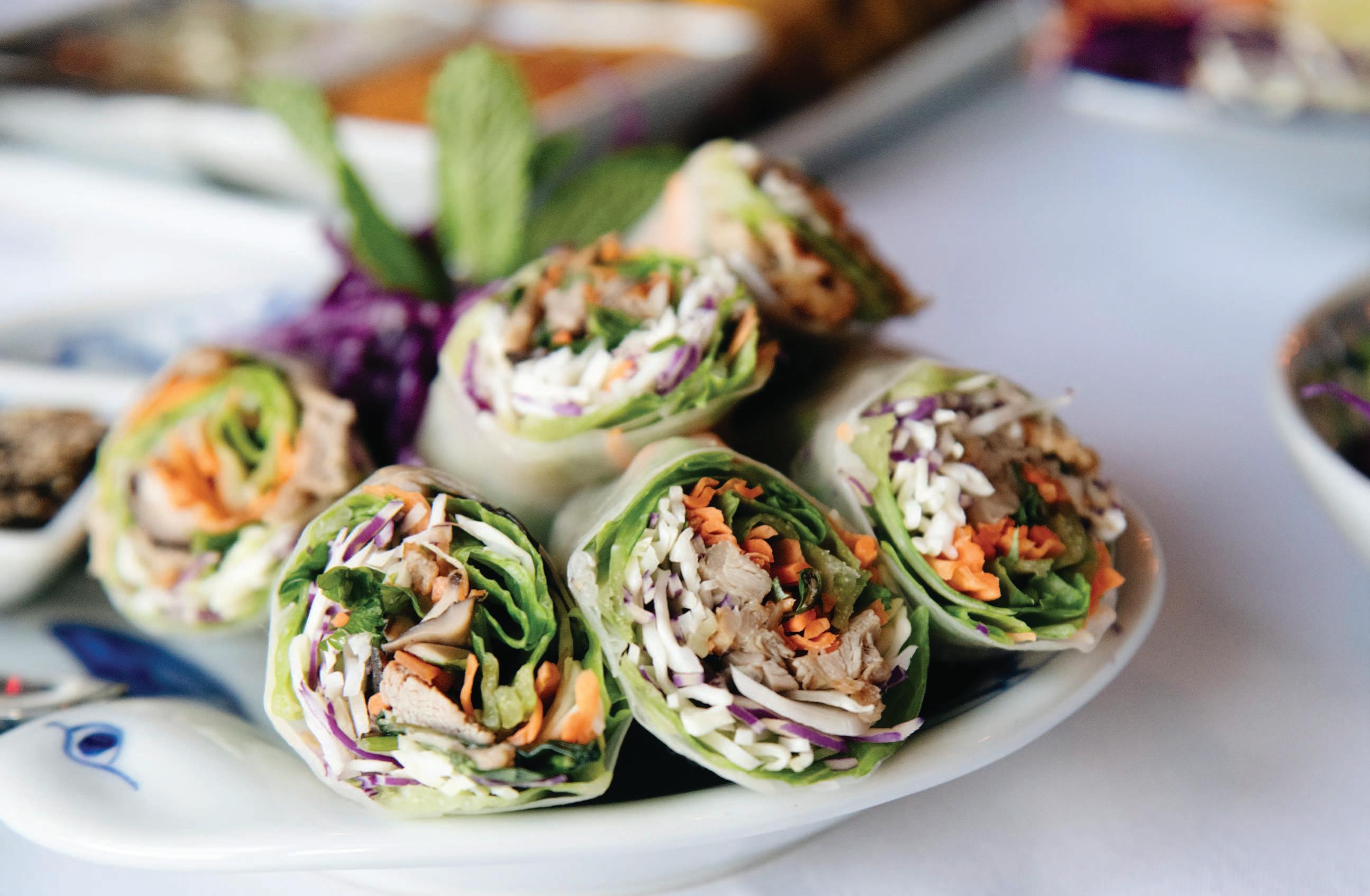
When it comes to dining, Chesterfield offers its residents and visitors a little bit of everything. From casual Thai and ramen to a New York-style eatery, those exploring West County are spoiled for choice in Chesterfield’s diverse culinary landscape.
Scan the code to explore more of Chesterfield's dining scene in our full guide.

Addie’s Thai House boasts an almost overwhelmingly long menu of scaled-up Thai classics. Feeling swamped (in a good way) by the list of appetizers, curries, noodle dishes and fried rice? No problem: Addie’s offers a prix fixe dinner menu for two, which includes four courses of the establishment’s very best dishes. For those feeling a more casual vibe, Addie’s is also home to Henry’s Tavern, which offers Thai bar food like wings, peppered beef and spring rolls alongside cocktails and beer.
14156 Olive Blvd., Chesterfield, Missouri, 314-469-1660, addiesthaihouse.com
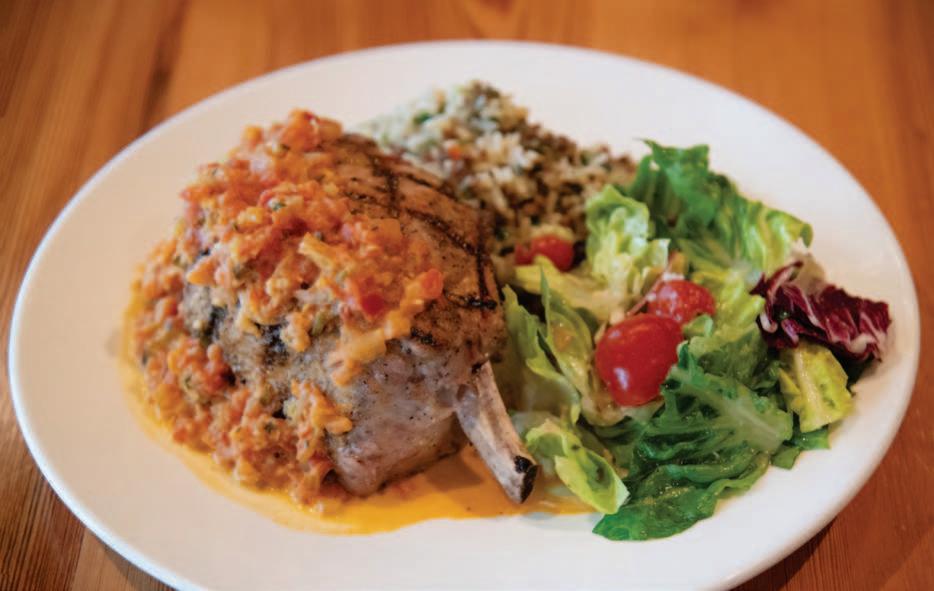
“Institution” is the first word that comes to mind when we think of the widely loved Annie Gunn’s. The restaurant is known for its steaks, seafood and American classics alongside expertly chosen wine and drink pairings. A visit to Annie Gunn’s may be reserved for special occasions, but right next door lies the restaurant’s Smokehouse Market. The casual spot features an ample selection of deli sandwiches, salads and daily off-menu specials. Pick up a Tim’s Turkey Dip dunked in au jus, a classic corned beef sandwich, or one of the many small-batch, made-from-scratch soups.
16806 Chesterfield Airport Road, Chesterfield, Missouri, 636-532-7684, anniegunns.com

HiTea elevates Chesterfield's dining scene with an authentic Japanese experience, featuring a range of traditional dishes such as bento boxes, ramen and rice bowls. Donburi, which HiTea calls a “quintessential Japanese comfort meal,” features warm rice and a variety of toppings like niratama (stir-fried eggs and chives), pork katsudon and mapo. Drink options are just as diverse: Choose from colorful milk teas, cocoas, brown sugar boba, matcha, fruit teas and smoothies.
13700 Olive Blvd., Chesterfield, Missouri, 314-392-9399, hiteachesterfield.com

Black Salt seeks to revolutionize Indian cuisine in the St. Louis area. Helmed by seasoned chef Madan Chhetri, whose culinary journey began as a prep cook in Bangalore at age 16, the restaurant is a culmination of his extensive experience, including stints at popular establishments like Basil India and Turmeric. At Black Salt, Chhetri gives Indian fare a contemporary touch. He’s curated a menu that features recipes from diverse regions, enriching the St. Louis culinary scene with a modern twist on authentic flavors.
1709 Clarkson Road, Chesterfield, Missouri, 636-204-6441, blacksaltstl.com

Sunisa Thai owners Silpakorn "Jeff" Tabtiang and Gunsinee "Nhong" Khotraweera know a thing or two about cooking traditional Thai fare. Khotraweera was a chef in Thailand before her move to the U.S., and Tabtiang has worked his way through the St. Louis Asian food scene for more than three decades. Today, they bring popular Southeast Asian dishes to Chesterfield that you’d be hard-pressed to find elsewhere. You’ll find curry on the menu in every form, but there are plenty of options for those seeking something new. Try pla lard prik, deep-fried fish served with sauce and peppers, or the pineapple roast duck curry. Don’t forget to leave room for dessert, which includes banana sticky rice and roti with condensed milk.
17535 Chesterfield Airport Road, Chesterfield, Missouri, 636-537-9997, sunisasthairestaurant.com


































A generations-old soda manufacturer, Excel Bottling Co. is sticking to its original identity –but that doesn’t mean it hasn’t embraced change along the way










In navigating the 46 miles of road between St. Louis and Breese, Illinois, you may find yourself suddenly wrapped up in the landscape. As interstates change to byways, the countryside rolls along, square plots of farmland and barns appear, and you realize the whole experience is actually quite meditative. But why venture east over the river in the first place? There are plenty of reasons, but one good one is a certain craft soda bottling facility from the 1930s.
Excel Bottling & Brewing Company has a long and storied history. For instance, it was established in 1936 with the reward money its founder, Edward “Lefty” Meier, received for catching a bank robber. He and his wife, Catherine Bruegge Meier, who managed the business’ bookkeeping until she was 97 years old, set up shop in Catherine’s grandmother’s house in Breese. As they were coming up with names for their newly launched company, the Meiers went against the grain by refusing to name it after themselves. “There was a movement where people would name the soda company after their last name,” says current Excel owner and Edward’s grandson Bill Meier. “But they said, ‘Oh, no. It’s not about us. It’s about the soda. Our goal is to produce the most excellent version of soda that we can.’ So they called it Excel.”

After three generations of business, the circa-1875 house in Breese remains the site of Excel’s modern-day bottling plant and offices. “At the turn of the century, these little towns had mom-and-pop bottling companies – people brought their empties back, you sanitized them, and they went back out,” Meier explains. “So, we’re still doing that.”









As it turns out, Excel is one of the few soda bottlers in the U.S. still reusing its own bottles. And although the original house has been expanded on to incorporate all the equipment needed to produce both soda and craft beer – the latter of which began 10 years ago – reusable bottles are still filled with flavorings, carbonated and capped on a vintage soda bottling line. Jewel-toned bottles flash by in precise order, one by one, in the same way they always have. The end result blends unwavering loyalty to Excel’s original identity with careful, calculated growth.
The best part? You don’t have to drive all the way to Breese to find Excel products, though we can attest that exploring the town or returning your bottles and buying new – like the locals have done for years – are both activities well worthy of a trip. For now, the beer is easier to find in Illinois, but the sodas’ dazzling array of flavors can be found all over St. Louis. “We were super fortunate that restaurants in St. Louis [decided] to go for somebody that’s local and craft,” Meier says. “What we pride ourselves on is if you get an [Excel] sweetened drink on a fountain in St. Louis, it’s not made with high-fructose corn syrup. We use cane sugar because it’s non-GMO. We’re organic-certified and kosher-certified.” Plus, Meier adds, having Excel products in St. Louis restaurants, coffee shops and bars – like Gramophone in The Grove, which stocks Excel in its soda fountain – inducts a whole new generation of fans. You can purchase a four-pack of Excel’s Darkest Hour Black Cherry soda at Straub’s in the Central West End; it features a glow-in-the-dark label in honor of the upcoming April 8 solar eclipse. The ginger ale is available at Vincent’s Market in Soulard or at LeGrand’s in St. Louis Hills; it’s a great mixer or alternative to alcohol.







What we pride ourselves on is if you get an [Excel] sweetened drink on a fountain in St. Louis, it’s not made with highfructose corn syrup. We use cane sugar because it’s non-GMO. We’re organic-certified and kosher-certified.
– Bill Meier









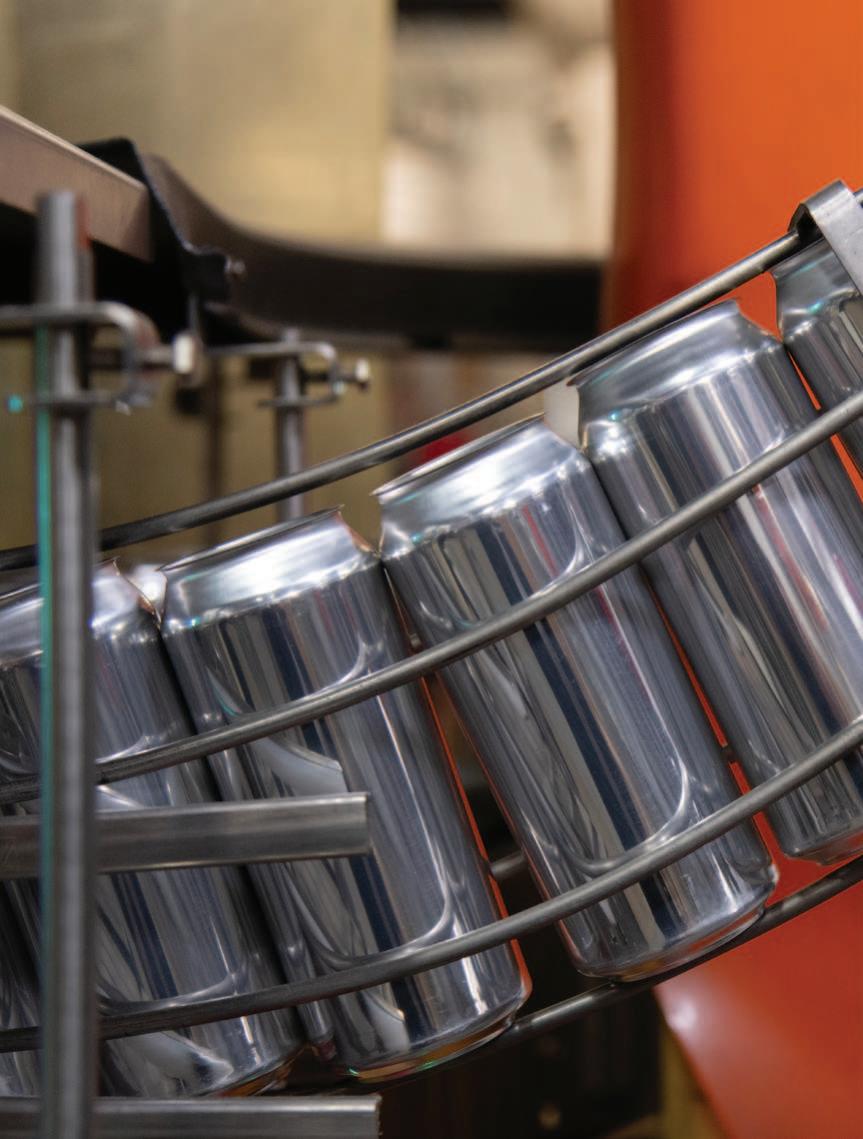
In St. Louis, you’ll find Excel products in neighborhood grocers like Local Harvest, local shops like Gelateria and Sugarwitch and restaurants like Hi-Pointe Drive-In. In fact, Hi-Pointe will craft a float out of vanilla ice cream and the Excel flavor of your choosing for $6. “Our products cost more than Coke and Pepsi because we’re using the best quality flavorings that we can,” Meier says. “When you go out to eat, you want good food, you want to socialize, and you want something of quality. You don’t walk into Sugarfire [Smokehouse] or Hi-Pointe because it’s the cheapest –you go there for the experience.” You’ll find Excel all over the Metro East as well – from Schwegel’s Market in Alton, Illinois, to farmers markets, gas stations and grocery stores in Belleville. For a full list of locations selling Excel products, visit excelbottling.com.

But what about the future? Excel operates a large distribution center across town, where palettes of bottles and cans are stacked floorto-ceiling. As the company expands, slowly and methodically, Meier continues to keep an eye on its carbon footprint, including making some changes. “We like glass, but we also realize you can’t take glass to [many events],” he says. “At local events, we’ve always had plastics, but the reality is those are just not great for the environment. We need to transition to something that is more recyclable; in my view, aluminum is better for the environment [because] you can melt it down and make more aluminum. If it’s more sustainable, we need to move ourselves there.” As Excel moves toward a more sustainable future while forever paying homage to its past, one thing’s for sure: You can’t find a much better soda than this.
Excel Bottling & Brewing Co., 488 S. Broadway St., Breese, Illinois, 618-526-7159, excelbottling.com
Multimedia reporter Daniel Puma takes readers behind the scenes of Excel Bottling in this video story.




PRESENTED BY


Cucumbers thrive inheat andsunshine, so choosea brightspotand getdigging. Asthey grow,keepthe soil damp, not soaking,andin just acoupleofmonths, you’llhave daintyyellow flowers that soontransform into hearty, crunchy cukes These plants also liketo climb, and you can easily guidetheirvines towardafence ortrellis.
Cucumbers are great sources ofpotassium,andthey’re clutch whenit comes to rehydration,both forthe insideofthebody(cucumber water) andoutside (cooling slices overtired eyes).
SPONSORED C ONTENT BYKATHERINELEWIS

Although tomatoes can befinicky to grow, cherry tomatoesofferthebest chance ofsuccess. Whether plantedinthegroundorin acontainer, they’llneed a nearby trellis to latchonto, plenty of waterandsix to eighthours ofsun a day. Afterabout two months, thesesweet,flavorful fruitscanbe eatenright offthevine. Tomatoes area crucial source ofthe antioxidant lycopene,known to lowerinflammationand cholesterol,andthey’re high invitaminC.

If you’re antsytogetplantsy, beginwithleafy greens Theycan go inthegroundas soonasthe soil reaches50 degrees, andtheleaveswill mature before thepunishing midsummerheat settlesin. (Theycanalso beplantedin late summer, afterthe worst oftheheathas passed.) Swiss chard andlooseleaf lettuce areparticularlyeasyto-grow crops.Mildlysweet, redandgreenlooseleaf lettuce are great sourcesof vitaminA, folate andiron. Rememberthatwithfruits and vegetables, thedeeper the colorthemore nutritious itis,so opt for romaineand arugula overiceberg.
It’shearteningthatpeoplehavebecome increasinglyawareofthemanyways toreduceourcarbonfootprint—by recycling,using energy-efficient lighting andappliances,eatingfoods grownclosetohome—andwhyit’s criticallyimportanttodoso.Eating locallygrownproduceisn’tjustkind totheenvironment,italsomaximizes thehealthbenefitsofthefruitsand vegetablesthemselves.
“Freshproducesuchasleafygreens, tomatoesandonionsareoftenpicked 24to48hoursbeforebringingthemto thelocalfarmersmarket,”saidYinCao, ScD,MPH,associateprofessorofsurgery andmedicineatWashingtonUniversity SchoolofMedicineinSt.Louis.“This meansahighernutrientdensitycanbe foundwithinthefruitsandvegetables youchoose.Also,therearenoartificial lights,temperaturechanges,added chemicalsorlongtransporttime,which causefoodtolosenutritionalvalue.”
Buyingfooddirectlyfromthepeople whogrowitbringstheaddedbenefitof
gettingtoknowmoreaboutthefarmers themselvesandtheirpractices.Farmers marketsarefantasticopportunitiestoask questionsabouthowfarmersgrowtheir foodorsimplylearnwhatproduceisatits peak.Thistimeofyearisidealforbroccoli, onions,asparagusandmushrooms.Keep aneyeoutforever-elusiveramps(also calledwild leeks)andfiddleheads,foodie favoritesthataretypicallyavailablefor justafewshortweeksinearlyspring.
Fruitsandvegetablesarethebestway to“eattherainbow,”thatis,tofillyour plate withcolorfulfoodsthatbringa spectrumofvitamins andminerals.
“Freshvegetablesandfruitsarebeneficial toyourheartandaidheavilyinweight management.Thefiberinthemreduces yourbloodpressure,helpsimprove bloodcholesterolandreducestherisk ofobesity,Type2diabetesandheart failure,”Caosaid.Vibrantlycolored produce—thinkblueberries,purple asparagus,redcabbage—isbrimming withanthocyaninsandantioxidantsthat helpsweepawayfreeradicals,whichcan bedetrimentaltocellhealth.

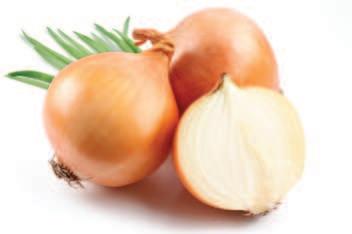
Biggeronionslikeredor white grow bestfrombulbs and canbeplantedin early spring. Tall,slendergreen onions (or scallions)can grow from seeds;they sprout quickly andhaveevenbeen known to make itthrough thewinter Allonionsthrive insunny spacesand can handleperiodsofdrought, butthey’re happiest when the soilisdamp. Onions, scallions, leeks and garlicare all partoftheallium family, andthey boastanabundance ofantioxidants, including vitamin C andheart-healthy quercetin.

YIN CAO,ScD, MPH
Associateprofessorofsurgeryand medicineatWashingtonUniversity SchoolofMedicineinSt.Louis
PHOTOPROVIDEDBYSITEMANCANCERCENTER
Whenpossible,eatthefruitorvegetable withitsskinintact,asit’sestimated thatskinandpeelsholdnearlyone-third ofitstotalfiber,whichcanhelpyou feelfullerforlonger.Also,bemindful ofhowlongyou’recookingproduce. Nutrientsleachoutwhenvegetablesare overcooked,soit’sbesttoroastorboil themfornolongerthanfourminutes.
Forfoodgrownevenclosertohome, considerplantingyourownfruitsand vegetables foroptimalfreshness.


Salad
SALAD
1 cup spinach leaves
1 diced apple
¼ cupthinly sliced red onion
Toasted walnuts or pecans
Driedcranberries
Goatcheese
APPLECIDER
VINAIGRETTE
3 Tbspfresh lemon juice
3 Tbsp applecider vinegar
1 Tbsp honey
¼ cup olive oil
Salt and pepper to taste
PREPARATION
This recipeisendlessly flexible.Substitute the apple formandarin oranges, or evenadd almonds for a different typeofcrunch.
Simplycombinethese ingredients inonelarge bowl.Make it your own andenjoy.

Switchgrass Spirits has been around for longer than you think. Although the brand released its first bottles in 2020, the team had formalized the concept years earlier in 2016, and it began by rebuilding a historic American Legion Hall in Wellston, Missouri. The distillery recently released a designated spirit it’s been working toward producing from the start: Bottled-in-Bond whiskey, which stands as a measure of what the team has accomplished and what the future holds for the brand.
The Bottled-in-Bond designation stems from the Bottled-in-Bond Act of 1897, a set of legal guidelines created as a way to enforce quality assurance at a time when American whiskey was often diluted and tainted with additives. Today, the distinction signifies a transcendent dedication to authenticity, craftsmanship and quality.
Whiskey produced under the Bottled-in-Bond designation must be made by one distiller in a specific time frame or “season,” which extends from January to June or July to December. The product must be aged at least four years in a regulated distillery and never moved beyond the walls of its original home. With stringent guidelines come benefits beyond the title, most notably including tax incentives that allow distilleries to pay tax when whiskey is sold rather than when it’s created.

We’re trying to pull back the curtain on the process, and we hope people enjoy the results of what we’re doing. I feel like things taste better when you know more about them.
– SARAH MILLER

For co-founders Patrick Grosch (head distiller), and Nick Colombo (head of operations and finance), the designation has been the goal since inception. “When we first started [Switchgrass], it was our goal to get to this point,” Sarah Miller, co-founder and head of compliance and outreach, says. “To sell Bottled-in-Bond whiskey takes a long time. We’ll still have younger whiskey because it offers a different price point and flavor, but now we’re entering into a different category with the brand.” The mix of offerings alongside Bottled-in-Bond lends breadth and depth to a brand known for its outstanding selection of rye and bourbon whiskey, apple brandy, and limited releases like the wildly popular Gold Dust, a 65 proof bourbon made with ginger, lemon and honey.
Switchgrass is also known for showing up to showcase its products to the community. Since 2020, the team began appearing in force at pop-ups, farmers markets and storefronts to give St. Louis (and more recently, Kansas City) a taste of what it's been building. Miller says that public tastings have always been a key component in development. “We give out samples everywhere we go, which is so much fun, and it’s great because you can see people’s reactions,” Miller says. “It’s all really valuable information. We can’t be everything to everyone, but it’s interesting to see what hits.”
For Bottled-in-Bond, the distillery took it one step further by inviting a select few professionals from all corners of the industry to taste and rate the barrels eligible for the release. The founders looked on while greeting tasters and occasionally checking in on the proceedings. After the whiskeys were poured – straight from each of the nine barrels – guests were asked to give notes on each one’s nose, taste and finish, as well as their top picks of the day. It’s not as simple as it sounds; Miller notes that tasting spirits at the barrel-proof level often makes it difficult to discern flavor and textural profiles. “When
proofs are lower, the spirit opens up and it’s a little bit easier to taste different things, so people were working hard [to detect the profiles],” she says. The final Bottle-in-Bond whiskeys – one bourbon and one rye – are the culmination of a blend of favorites from the tasting, bringing the best of the batch to market. The bourbon carries notes of honey, cornbread and citrus oil, which lend voluptuousness to the spirit. The rye is all pear and juicy fruit up front (“Almost like a cola, a sweet flavor,” Miller says) with more of a tropical finish.
Although crossing this milestone is cause for celebration, it’s also given the team a chance to focus on what’s next for the distillery. They’ve tentatively mapped out the next three years, which includes some collaborative projects and special barrel releases in the works. The distillery’s tours have been growing in popularity, which Miller says is as exciting for Switchgrass as it is for the guests. “We’re very happy to share our process,” she says. “We’re trying to pull back the curtain on the process, and we hope people enjoy the results of what we’re doing. I feel like things taste better when you know more about them.” And all that time spent sampling products in the community is paying off – bottles are widely stocked all over St. Louis and Kansas City, and people venture to markets intent on growing their Switchgrass collections. “We take so much pride in our production, and I feel like consumers are starting to taste that difference and also understand the time and effort that’s behind it.”
To learn more about the distillery, new releases for the brand and where it will be sampling its spirits, follow Switchgrass Spirits on Instagram at @switchgrassspirits.
Switchgrass Spirits, 6100 Idadale Ave., Wellston, Missouri, switchgrassspirits.com









 Written by Charlotte Renner | Illustrations by Jillian Kaye
Written by Charlotte Renner | Illustrations by Jillian Kaye


As the ice of winter begins to thaw and flowers bloom, we get the itch to leave the city behind for the country. Luckily, just an hour outside of St. Louis sits Augusta, Missouri. “It’s super small and quaint; it’s very beautiful with the rolling hills from the river,” Root Food + Wine owner Philip Day says. Beaming with idyllic charm, pastoral vineyards and easy access to the Katy Trail, Augusta is an ideal springtime destination.




















Augusta’s main attractions are arguably its wineries. Resting atop the bluffs overlooking the Missouri River Valley, Augusta Winery offers award-winning wine with a view. If you’re feeling peckish, order some charcuterie for your own picnic or enjoy it on the winery’s outdoor terrace. Located on the outskirts of Augusta, you’ll find Mount Pleasant Estates. Dating back to 1859, it’s the oldest winery in the Augusta Appellation, which is the first government-appointed wine-growing district in the United States. For more Missouri history, Day recommends heading to The Historic Daniel Boone Home, situated 8 miles outside of town. To get a historic tour from the water, take a ride on the Miss Augusta, a river cruise down the Missouri River. Day says his favorite Augusta activity is simply enjoying the great outdoors. “Going up to look over the river from Klondike Park and just enjoying the beautiful scenery – that’s a really neat thing,” Day says. “It’s very beautiful.” Take a bike ride down the Katy Trail, or drive to the park Day mentions – Klondike is a St. Charles County Park that offers miles of hiking trails, fishing and scenic overlooks.




















If you were so inclined, you could spend an entire weekend in Augusta simply eating and drinking your way around the area’s seemingly endless supply of standout restaurants and bars – and that’s not even counting the wineries. Root Food + Wine (owned by Day, our 2023 Feast 50 Chef of the Year honoree) is the perfect end to a day on the trails; its farm-to-table ethos means you’ll get fine dining-level dishes made with produce grown mere miles from your table. For locally crafted beers, head to Good News Brewing – the product of two friends who grew their home-brewing hobby into five brewhouse locations. Make a reservation at Botanical Tea Room for afternoon tea, where you’ll learn about culinary and tea herbs, edible flowers, and native ingredients. To grab a classic American breakfast, sandwich, meatloaf and more, visit the White House Cafe





To get the full Augusta experience, stay at one of the town’s cute inns or bed-and-breakfasts. Each is located just blocks away from the town’s best restaurants and activities. “You can walk to pretty much anything in town if you stay at one of the bed-and-breakfasts,” Day says, “and many wineries have a trolley that takes people around town.” Most bedand-breakfasts are also walking distance to Day’s restaurant. The H.S. Clay House offers five luxurious rooms in an original 1885 Queen Ann Victorian house, which maintains its historic charm with the addition of modern conveniences. The Lindenhof Bed & Breakfast has a homier feel, with a warm stone fireplace, hot tub and sprawling patio. Applegate Inn, on the other hand, is a two-story log cabin that was originally built in 1864. The best part? In the morning, there’s no need to worry about scrounging up a meal; head to the communal area to enjoy a homemade breakfast with the other guests.










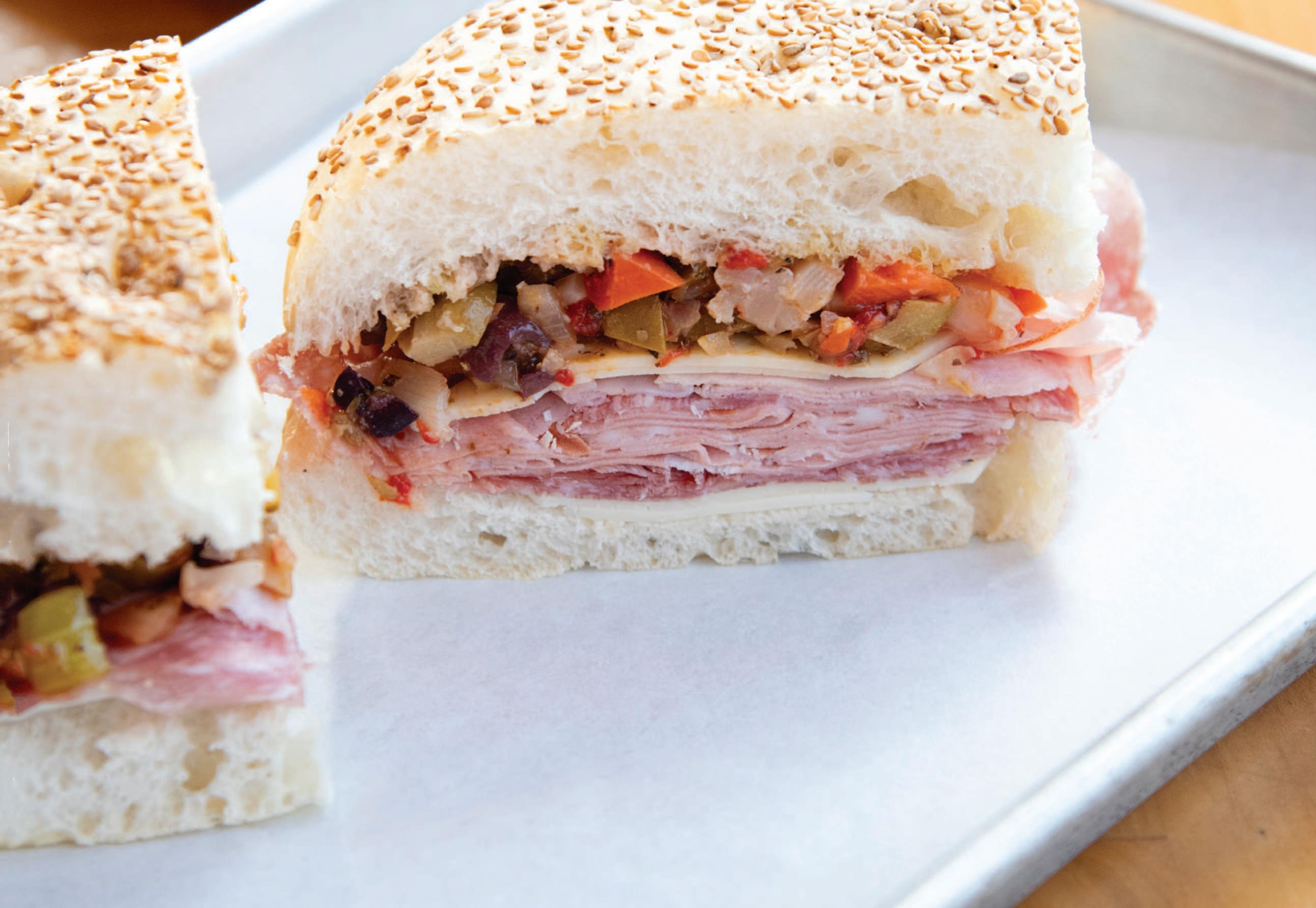
These old-school staples and new kids on the block give our neighborhoods their signature flavor.
The food scene in St. Louis is anything but typical, which can make it easy to overlook our neighborhood sandwich shops and delis. We’re talking about the ones that save the day with a saucy sub or hook us up with fresh, local meats. These are more than sandwich shops or markets – they’re community hubs and part of the city’s culinary identity. Read on to discover five delis we think bring St. Louis closer together.

A recent Yelp award-winner and all-around sandwich lover’s paradise, Blues City Deli specializes in po’boys and muffulettas and prepares about every other variety of sandwich you can imagine. Customers might have to wait in line during the lunch rush, but we promise it’s worth it. Once you make it through the doors, the combination of blues music playing through the speakers and blues memorabilia hanging on the walls makes even the coldest spring day feel like a party. The hospitable staff at the shop is the icing on the cake (or the Boom Boom Sauce on your classic Thunderbird sandwich).
2438 McNair Ave., Benton Park, St. Louis, Missouri, 314-773-8225, bluescitydeli.com

Deli Divine is the most recent addition to Ben Poremba’s venerable list of St. Louis classics. A callback to renowned Jewish delis in big cities all over the country, Deli Divine offers chicken kneidlach, or matzo ball soup; hand-sliced hot pastrami and smoked whitefish with sauerkraut sandwiches (among others); salads, kugels and knishes; sours and pickles; Reubens on marbled rye; and plenty of corned beef. The deli even boasts its own bagel menu, with seeded pumpernickel that can be topped with lox, smoked sturgeon, salmon pastrami, smoked trout roe and a few types of caviar.
5501 Delmar Blvd. Ste. 5535D, West End, St. Louis, Missouri, 314-987-3354, bengelina.com/deli-divine
Family-owned and -operated since 1987, LeGrand’s Market & Catering is an essential stop for anyone whose idea of a good time is exploring neighborhood corner stores. At the butcher counter, you’ll find pristine whole chickens, bratwurst in various flavors and tons of pork and beef cuts. LeGrand’s also has an extensive sandwich menu with favorites like the Legend Club (Southwest-style turkey, pastrami, pepperoni, bacon and hot peppers), its No. 1 seller. Pair it with the Red Hot Riplets mac ‘n’ cheese for the ultimate St. Louis experience, and check out the frozen pizza section – LeGrand’s has its own flavors now!
4414 Donovan Ave., St. Louis Hills, St. Louis, Missouri, 314-353-6128, legrandsmarket.com
It’s hard to choose just one deli to visit on The Hill; in fact, there’s an excellent pick on almost every corner. But DiGregorio’s Italian Market stands out for its warm environment and meticulously organized sections of local and name-brand meats, cheeses, breads, wine and beer; Italian desserts and cookies; antipasti bar; and shelves of nonperishable and canned goods. Plus, the market’s selection of frozen items makes it easy to impress someone with a last-minute dinner of stuffed pasta and red sauce. If you do have time to make a meal from scratch, you’ll likely find all the ingredients to do so here.
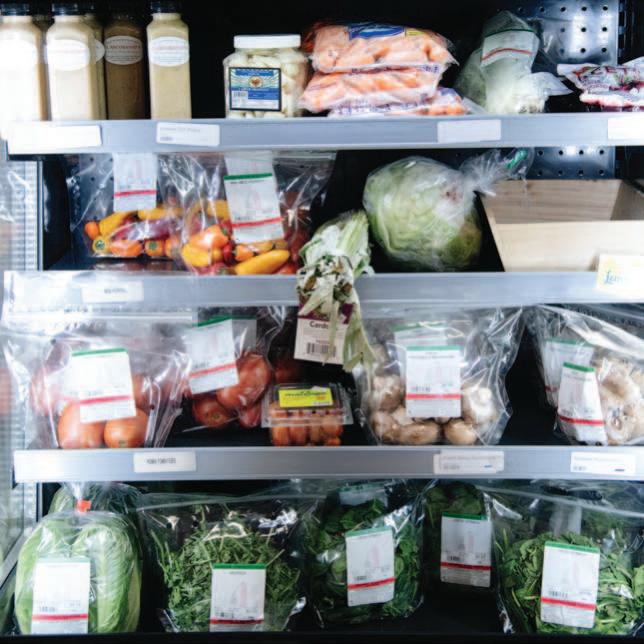
5200 Daggett Ave., The Hill, St. Louis, Missouri, 314-776-1062, digregoriofoods.com
As the new kid on the block, Vegan Deli & Butcher fulfills every vegan’s wildest dream to have a deli of their own. The pièce de résistance among chef Chris Bertke’s notable stints at restaurants around town, this Bevo eatery brings a certain East Coast finesse to the neighborhood. Bagels arrive via overnight shipping from New York City and are topped with vegan lox made from kelp-brined carrots. Bertke’s frozen pizzas – which have already garnered a cult following – are available for purchase, and there’s enough flavor in the Chicago Italian Beef, Maine lobster roll, Reuben and chopped cheese sandwiches to please all tastebuds – vegan or otherwise.
5003 Gravois Ave., Bevo, St. Louis, Missouri, stlvegandeliandbutcher.com

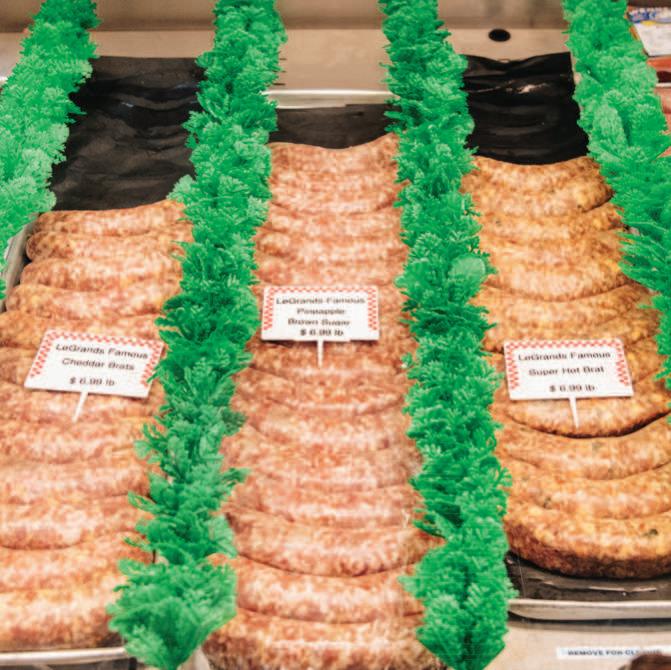

Acidic, sweet and beautiful in color, rhubarb deserves attention beyond dessert in your kitchen

Mystery surrounds the enigmatic, vibrantly colored rhubarb: Is it a vegetable or a fruit? Is it only used in pies? Let’s break down this misunderstood plant and discover unique ways to implement it at home from some of the city’s best culinary minds.
According to science, rhubarb is a vegetable, but it’s recognized as a fruit by the USDA. This member of the buckwheat family is ready to harvest between March and June, with April considered the peak time. The plant is only harvested once a year, which limits its use outside of the growing season unless it’s frozen or imported.
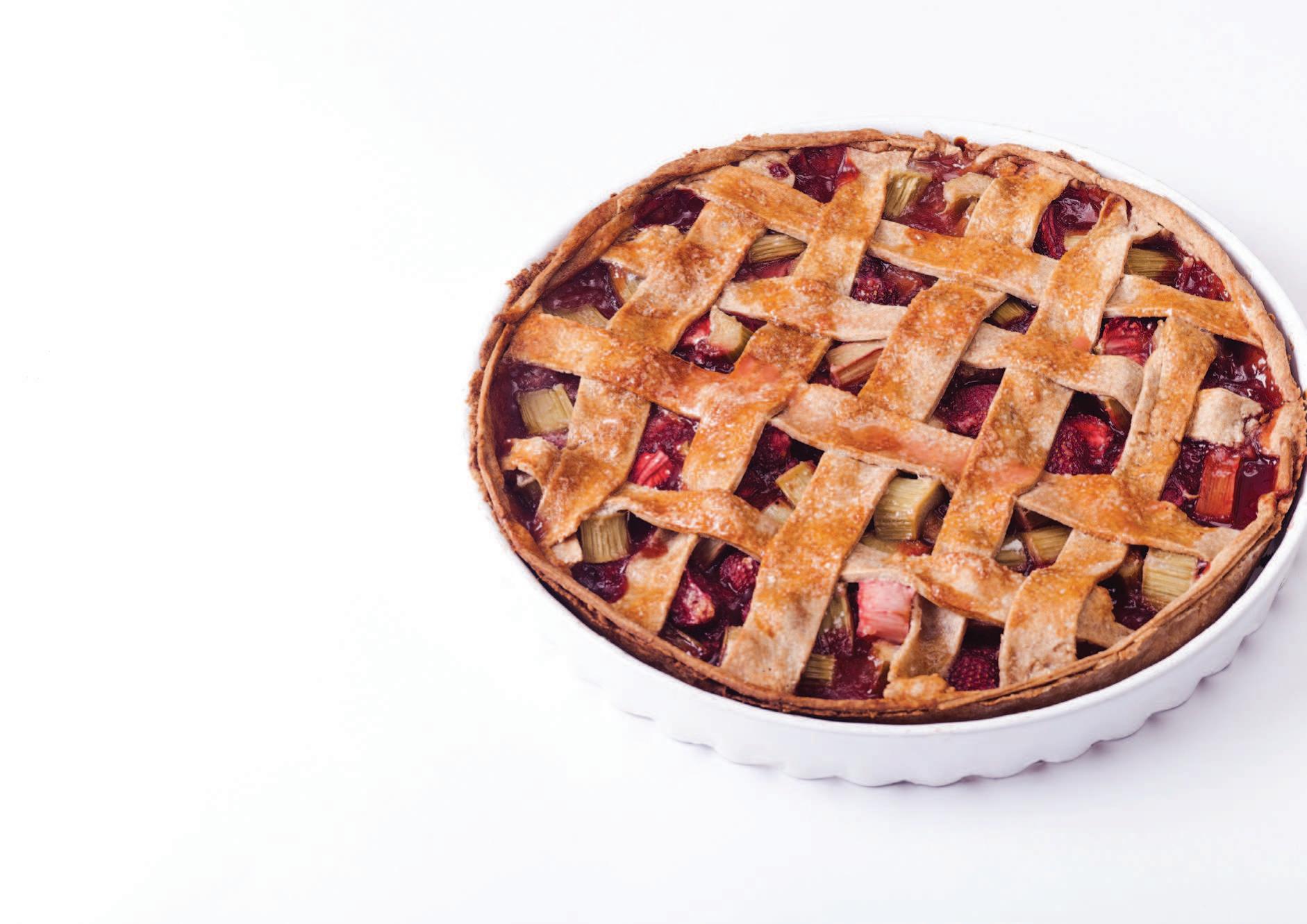
To pick the best rhubarb for home use, find stalks that are straight and appear fresh without signs of blemishes or decay. They can be stored at room temperature for a couple of days or in the refrigerator for a couple of weeks.
Contrary to popular belief, rhubarb stalks can be eaten cooked or raw. They were previously believed to be poisonous if left raw; however, only the leaves are poisonous if eaten, and they’re typically removed before hitting shelves.
Rhubarb is a vibrant magenta color and has a very tart flavor profile. When cooked, the tartness diminishes a little, and the plant softens. If left raw, it will remain quite crunchy. The stalks are often mixed with sugar to bring balance between tart and sweet.

One way to utilize rhubarb year-round is by pickling it. Bell recommends a refrigerator pickle without heat to help the plant retain its crisp texture. “You can cut it up and put it on your burgers or make it a relish for your hot dogs,” he says. And don’t throw out that pickle juice: Corey Moszer, The Lucky Accomplice’s beverage director, recommends keeping the rhubarb pickle brine to use in cocktails. For something on the sweeter side, Moszer combines it with sugar and vinegar to make a shrub. “Rhubarb lends itself to a shrub really well,” Moszer explains. “I’d try not to just cook it down with sugar immediately. … Letting it macerate overnight with sugar is great.”
Rhubarb is commonly found in desserts like strawberry rhubarb pie, but its uses can extend into new frontiers.
It may seem convoluted, but rhubarb is best served savory. At least, that’s what The Lucky Accomplice chef de cuisine Justin Bell thinks – he’s been known to grill it, pair it with lamb and peas and make savory soups.

“With that soup, you start with a lot of shallots and sweat them down until caramelized,” Bell says. “You develop this sweetness from the onions paired with the tartness of the rhubarb; it’s a cool play off of each other.” He even likes to use rhubarb for condiments such as ketchup. He adds: “The acidity is so much punchier with rhubarb than with tomatoes.”
The act of freezing rhubarb preserves it for use year-round, and it actually adds complexity to its flavor and texture. “Using frozen rhubarb can be very helpful because it’s picked at peak freshness before freezing,” Vicia bar director Leila Miller says. “There’s some water retention, but once defrosted, it will drop some of the water, leaving you with something a little more concentrated.” The result is full-flavored rhubarb with a softer texture perfect for making sauces, syrups, tinctures and more. In drinks, Miller likes to pair it with ingredients that will play well with the acid, like berries and oranges.

The Lucky Accomplice, 2501 S. Jefferson Ave., Fox Park, St. Louis, Missouri, 314-354-6100, theluckyaccomplice.com
Vicia, 4260 Forest Park Ave., Central West End, St. Louis, Missouri, 314-553-9239, viciarestaurant.com
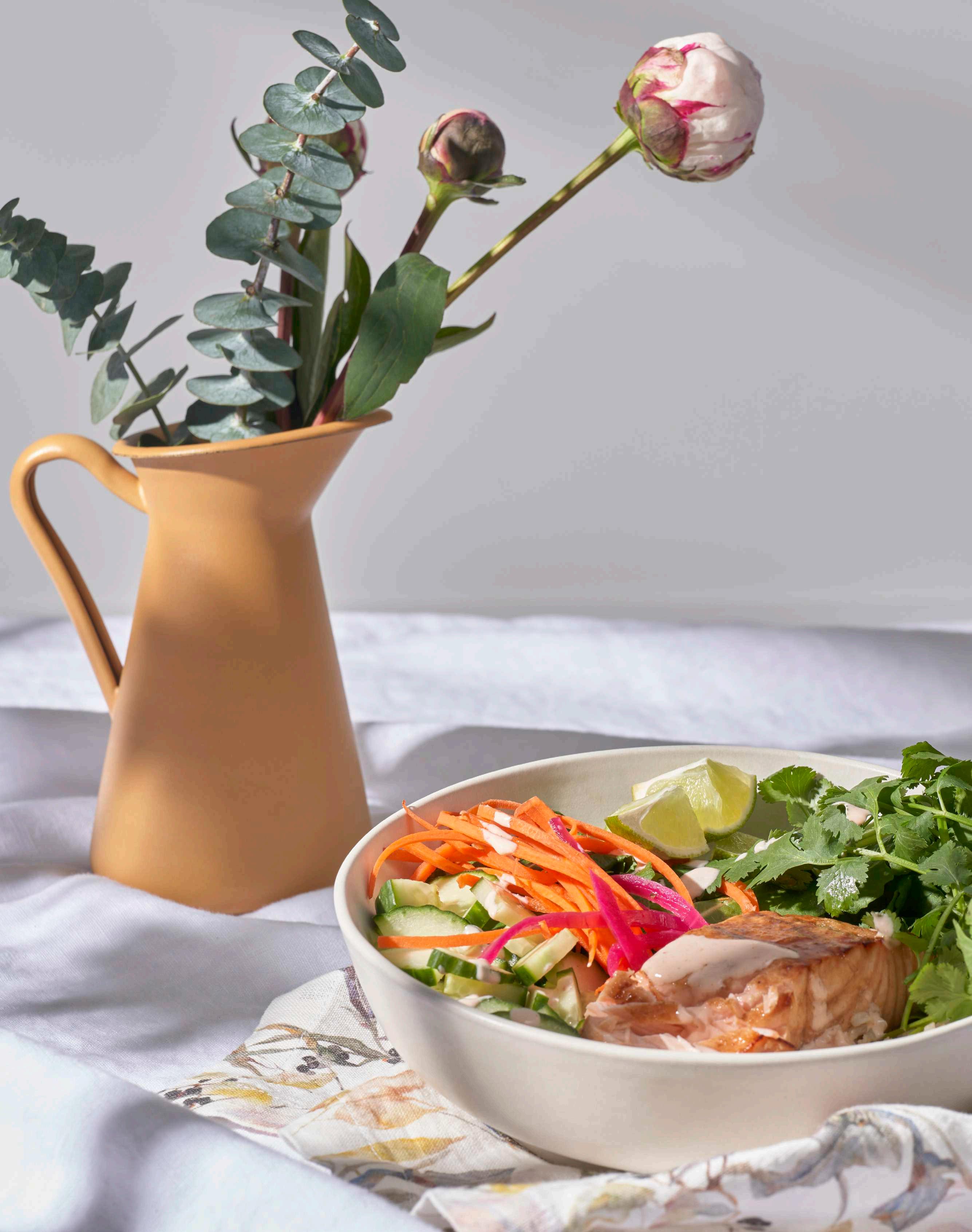
3 experts dish on secrets to successful (and healthy) meal-prepping at home
Written by Shannon Weber | Recipe photos by Jennifer Silverberg
When winter turns to spring and our lives inevitably start to get busy again, getting your meal planning back on track can be difficult. Luckily, the experts are here to share their secrets to creating healthy, balanced meals made with mix-and-match-able components that’ll never get resigned to the back of the fridge.




Allison Lesko, RD, LD is the founder of Lesko Health, a modern wellness company that provides one-on-one nutrition plans, recipes and resources for a healthy lifestyle.
Jess Seidel is the owner and operator of Element of Kai Concierge Event Chef Services LLC. She previously worked as a private chef.
Nicole Stubblefield and Ginelle Bess are the co-founders of Honey I’m Home Nutritious Foods, a dietitian-approved home delivery meal prep and catering service.
Seidel says scheduling time to shop for food is as essential as the meal prep itself, so build time into your weekly routine to purchase what you need. Meal prep often involves a lot of active chopping and mixing combined with more hands-off activities like roasting and marinating. Mapping out what you can accomplish while other things are cooking will keep you from feeling trapped in the kitchen. "The biggest mistake I've seen is over-complicating [recipes] and trying to do too much too soon,” Seidel says. “It's really easy to get overwhelmed by the sheer volume of food that we go through in a week, so start with the meal you struggle with the most and build from there.”
Airtight glass containers with secure lids in varying sizes to keep meals organized, fresh and easy to reheat.
Quarter-size lipped sheet pans for reheating meals and crisping leftovers. Batches of cooked grains like quinoa and brown rice to add to salads, wraps and bowls.
Flavorings like citrus, fresh herbs and housemade sauces and condiments to keep leftovers interesting.


















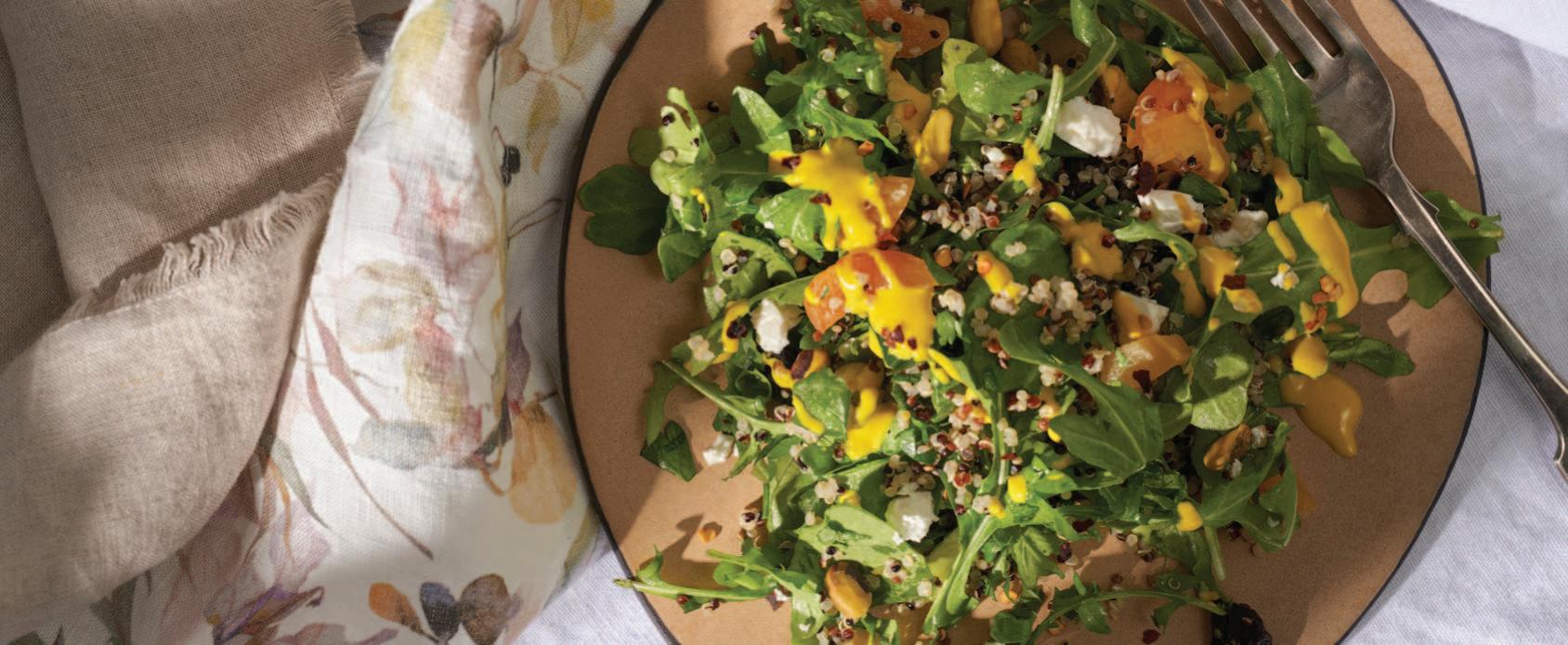
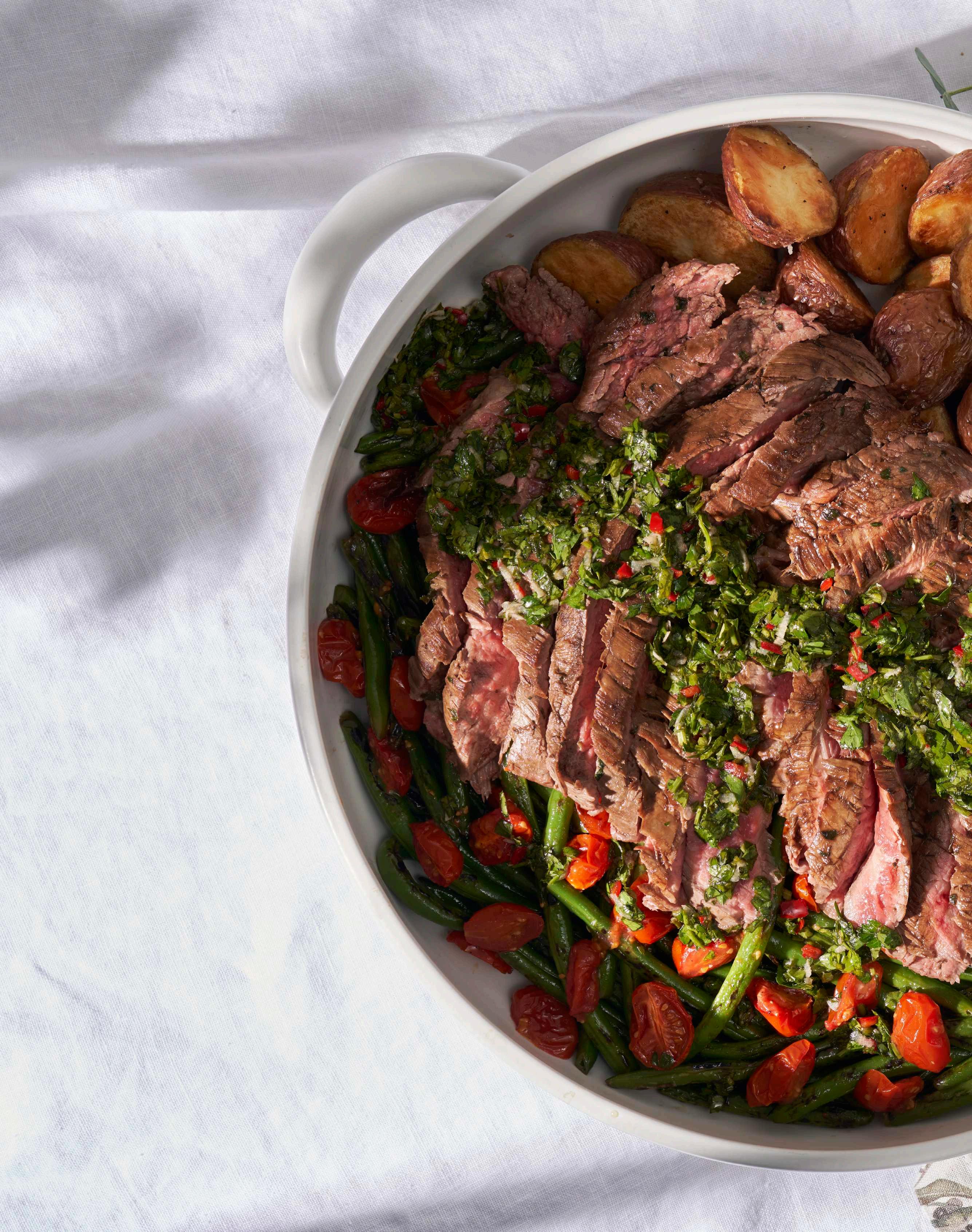
Throughout the week, look for fun recipes that interest you from reputable sources; make sure they contain few ingredients and aren’t laden with steps.
Lesko’s favorite sheet pan meals are easy to transition into something different the next day with a little creativity.
“As a foodie, I'm not going to want to eat the same thing week after week,” Lesko says. “I’m often scrolling through Pinterest and Instagram to find inspiration, then tweaking the recipe to make it balanced. Finding recipes that are easy are essential; my go-to recipes for the air fryer – simple ingredients that hit the spot and make me feel good."
This steak chimichurri recipe reheats beautifully the next day and makes the most of your sheet pans: All the veggies are cooked at the same time and temperature, and the tender flank steak takes mere minutes to cook. A bright chimichurri does double duty as a marinade and finishing sauce.
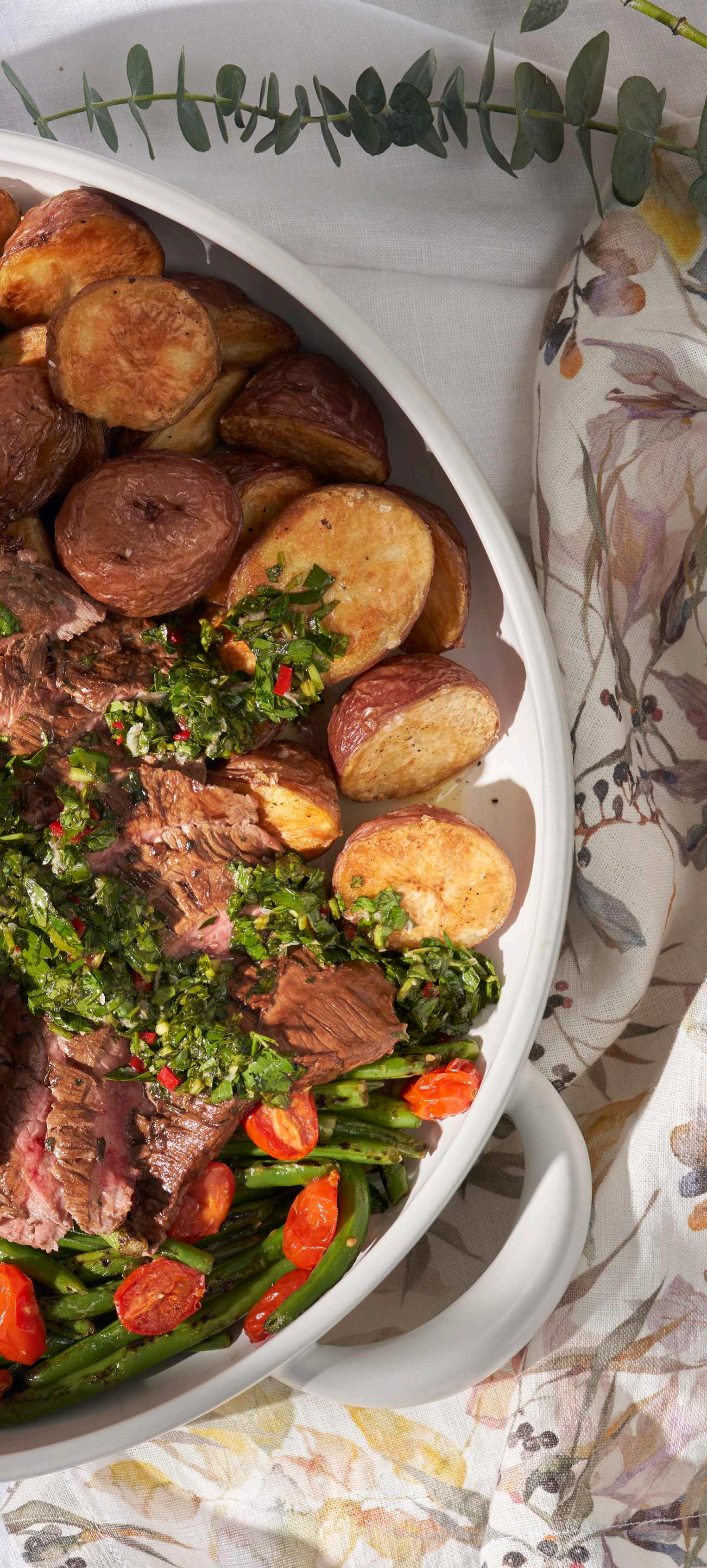
SERVES ] 4
CHIMICHURRI SAUCE
1 1/3 cupoliveoil
½ cupredwinevinegar
2 cupsfreshparsleyleaves, finelychopped (measure after chopping)
5-6 mediumclovesgarlic,minced
3 mediumFresnochiles,stemmed andseeded,minced (about 3 Tbsp)
2½ tspkoshersalt
FLANK STEAK AND SHEET PAN VEGETABLES
1½ lbflanksteak
1 lbsmallnewpotatoes, scrubbedandhalved
1 lbgreenbeans,trimmed
5 tspoliveoil,divided
10 ozcherryorgrapetomatoes,halved koshersaltandfreshgroundblackpepper
[ PREPARATION - CHIMICHURRI SAUCE ]
Stir oil, vinegar, parsley, garlic, chiles and salt together in a medium bowl to make a chimichurri. Reserve 1/3 cup of mixture and place remaining mixture in a glass jar; seal and refrigerate until ready to use.
Place steak in a shallow dish and pour reserved 1/3 cup chimichurri over top; turn over until coated. Cover and marinate for at least 2 hours or overnight in refrigerator. Before cooking, set steak on countertop to come to room temperature.
[ PREPARATION - FLANK STEAK AND SHEET PAN VEGETABLES ]
Preheat oven to 400°F. Place potatoes in a large saucepan and cover with water by 1 inch. Bring to a boil over high heat, then simmer for 10 minutes. Remove from heat and strain, then place back in hot pan to dry and cool slightly.
In a large bowl, toss green beans with 1 tsp olive oil and spread in a single layer on lipped sheet pan. In the same bowl, toss potatoes with 1 tsp olive oil and spread on the same pan with the beans. Add tomatoes to the same bowl and add 1 tsp olive oil; line a quarter sheet pan with parchment paper and spread tomatoes out in a single layer. Season all vegetables generously with salt and pepper and roast for 30 to 35 minutes.
In the meantime, remove steak from marinade, wiping off any excess. Heat a cast iron skillet to medium high; add 2 tsp oil and transfer steak to pan. Cook for 4 to 5 minutes per side, until thermometer registers 130 to 135°F. Remove, transfer to platter and rest 5 minutes.
[ TO SERVE ] Slice steak across the grain and divide onto plates with vegetables. Sauce steak and vegetables generously with chimichurri as desired.
Bess and Stubblefield’s menus typically highlight approachable favorites with unique twists, pulling from a foundation of mainstays and switching it up with sauces, herbs and seasonal produce. “When we're curating our menus, we aim to keep the options as unique as possible, but we want to offer the crowd-pleasing staples as well,” Bess and Stubblefield say. “We find that a balance of nutrition with our creativity in the kitchen keeps our clients full, happy and coming back for more.”
All of our experts agree that having a master list of go-to ingredients to mix and match helps make meal prep easier and more efficient.
Proteins | Organic chicken, wildcaught salmon and grass-fed beef.
Grains & Starches | Quinoa, brown rice, sweet potatoes and baby potatoes.
Vegetables | Bell peppers, onions, broccoli, green beans, asparagus, tomatoes, and greens like arugula, spinach and kale.
Sauces | Herb-based sauces like chimichurri and pesto, Greek yogurt-based dips and dressings, or homemade vinaigrettes.
Herbs & Spices | Fresh leafy herbs like basil, parsley, mint and cilantro. Spice blends like za’atar, garam masala, or a good fajita blend.
Citrus | Oranges, lemons and limes to make vinaigrettes and add acid and flavor.
This recipe takes easy ingredients and simple techniques and creates a bowl that's as beautiful as it is adjustable, with components that transport well and stay fresh for days. If you’re looking for a stunning desk lunch, this may be your newfound essential.

SERVES ] 4
SRIRACHA LIME DRESSING
¾ cupGreekyogurt
3 Tbspsriracha
juice of3limes
1 clovegarlic,grated
1-2 tspfreshginger, peeledandgrated
SALMON BOWLS
1/3 cupsoysauce
1 Tbspmaplesyrup
1 Tbspshiro(white)misopaste
1 Tbspoliveoil
juice of1to2limes
4 4-6ozskin-onsalmonfilets, atroomtemperature
1 batchcookedbrownrice, forserving
2 ozbabykale
1 Englishcucumber, thinlyslicedatanangle
2-3 carrots,julienne
1 cuppickledredonions
1 bunchfreshcilantroleaves
1 lime,quartered,forserving
[ PREPARATION - SRIRACHA LIME DRESSING ]
Whisk together yogurt, sriracha, lime juice, garlic and ginger until blended. Transfer to a sealed glass jar and refrigerate for at least 2 hours to blend flavors.
[ PREPARATION - SALMON BOWS ]
Whisk soy sauce, maple syrup, miso paste, olive oil and lime juice together in a small bowl until combined. Place salmon filets in a shallow dish; pour miso marinade over top and turn to coat. Set aside for 20 to 30 minutes to marinate.
When ready to cook, preheat broiler and place rack 6 inches from top of oven. Oil the bottom of a lipped sheet pan and transfer salmon to pan. Brush with marinade and broil for 10 minutes until salmon is cooked but tender.
Remove and let cool slightly as you prepare the bowls. Divide warm rice into shallow, wide bowls and add salmon filet to each. Divide vegetables over top of rice as desired, starting with kale, cucumber and carrots and ending with pickled onion and cilantro leaves.
[ TO SERVE ] Garnish with limes and drizzle with sriracha lime dressing or serve alongside.
The local light beer you’ve been waiting for.

























Small plates are having a big moment in St. Louis – in the last year, several tapas-style restaurants have opened around the city. From classic Mediterranean dishes to Midwestern twists, these spots present their unique takes on the Spanish tradition with flair.
From the mind of Ben Poremba comes this sophisticated yet relaxed Iberian concept. Its diverse drink menu, which ranges from vermouth to sangria to sherry, demands to be explored. The pan con tomate – toasted bread topped with puréed fresh tomatoes, garlic and olive oil – is a testament to taking simple food and executing it flawlessly. Stop by for a postwork cocktail and snack on Iberico ham, marinated olives and croquetas.
7610 Wydown Blvd., Clayton, Missouri, bengelina.com/bar-moro
After serving as a mainstay in Clayton for 20 years, this beloved restaurant closed in 2021. But we’re in the era of reboots, and BARcelona is back in action after reopening in November 2023. Its menu is full of traditional Spanish plates, including patatas bravas (crispy potatoes with spicy tomato sauce and aïoli) and tortilla Española (a hefty potato and onion omelet similar to a crustless quiche). If you’re looking for a main plate in this sea of starters, look no further than the iconic Valencian dish paella, available in vegetarian, chicken and seafood versions.
7810 Forsyth Blvd., Clayton, Missouri, 314-899-9600, barcelonatapas.com
The new kid on the block, Idol Wolf has quickly garnered a following since opening in late 2023. Its playful approach blends local ingredients with the Spanish ethos of slowing down and savoring. Don’t miss the roasted hen of the woods mushrooms with chorizospiced butter, masa cake and smoked aïoli, or the albondigas (pork and beef meatballs served with tomato sauce and Manchego cheese). In addition to sangria, the cocktail menu has a welcome amount of low ABV and NA cocktails, so everyone in your group can toast with something delicious in hand.
1528 Locust St., Downtown West, St. Louis, Missouri, idolwolfstl.com
A mainstay in The Grove, Sanctuaria’s long list of tapas has something for everyone. Enjoy all of Spain’s regional delicacies, from ceviche to fried artichokes to baconwrapped dates. In addition to Sunday brunch with dishes like biscuits and chorizo gravy, it also offers happy hour specials Tuesday through Friday from 4 to 6:30 p.m.
4198 Manchester Ave., The Grove, St. Louis, Missouri, 314-535-9700, sanctuariastl.com

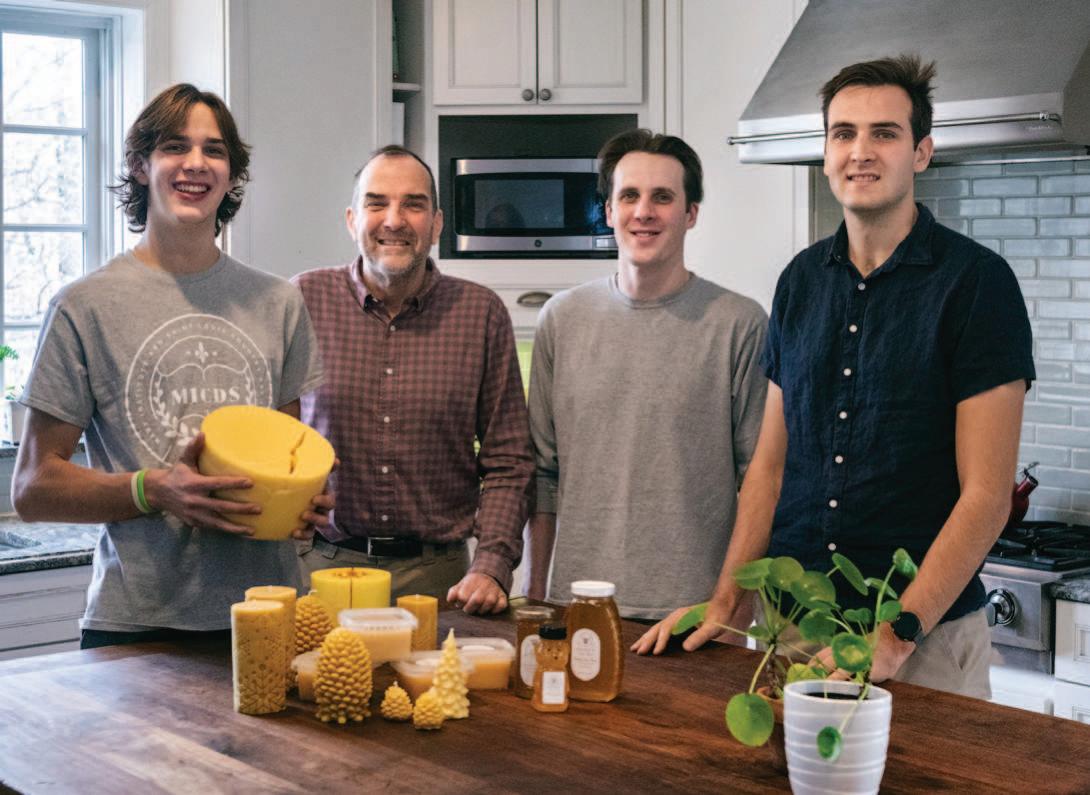
It’s hard to grasp all the efforts that go into producing honey until you witness it in person. But all that work is totally worth it for Warren Grace and his sons Ted, Louis, William and Peter, who launched Amazing Grace Honey together. The passion project stems from Warren’s love of beekeeping combined with a desire to teach his kids about how to start and run a business. The end result? Luscious gold.
In the honey world, there’s the hobbyist who might keep just a few hives, and it’s all for fun. There’s the sideliner who has a “real job” going, but they do this on the side and can be managing anywhere from 25 or so hives to several hundred hives. Then there’s the commercial person who might have thousands of hives and a staff of employees. I’m kind of odd in that I’m a sideliner, but I’m a suburban sideliner. Most sideliner beekeepers of any size are in rural areas. All [our] beehives are within Ladue, mostly in the backyards of friends. I run around, harvest the honey and manage the hives throughout the year.
The honey is hyper-local. Our honey is extracted and bottled without any pressure filtering or heating. In addition to traditional liquid honey, I make creamed honey, which is a finely granulated, spreadable honey with nothing else added; in Europe, creamed honey is almost all that’s consumed.
There are many schools – both public and private – throughout Ladue, and with the support of their administrations, we’ve established bee yards on some school properties. It’s all my equipment, but the faculty
gets to use the beehives to teach the kids aspects of biology and whatnot. They’re starting bee clubs. That’s the fun plan for the future: partner up with all the schools and institutions I can, and have this be a value add to them.
What are the nuances of Ladue bees?
Grace explains the best way to start beekeeping is to join a local beekeeping club. “Clubs have mentorship programs, and most importantly, will allow you to judge whether you really want to dive into beekeeping,” he says. “As a club member, you can experience how to manage hives, harvest honey and extract it for use. Then you can decide whether to invest in your own bees.”
What you have right here in Ladue is a short, intense nectar flow. It begins early April, peaks around Mother’s Day and is over by Father’s Day. That’s it. Additionally, everyone has their yard service and is spraying down everything in their lawns that would be traditional nectar sources. So, the nectar flow consists of flowering trees, ornamentals, clover and Asian bush honeysuckle. We do harvesting in one sweep through here. The bees bring in the nectar, load it into the honeycomb and then dehydrate it by pulling air through the hive. When it gets down to 18 percent or less moisture content, they cap it with wax. Most honeycomb is capped by Fourth of July. That’s when I go out, pull the boxes and extract the honey. It’s a scene; you feel like you’ve just been working in a cake frosting factory.
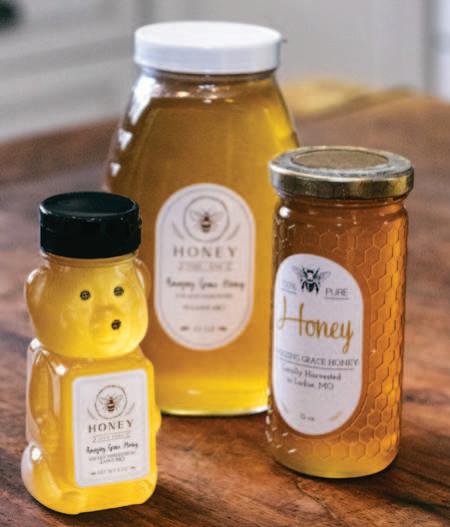
Amazing Grace Honey, Ladue, Missouri (available at The Wine & Cheese Place)



Jermasa Johnson’s foray into infused dining all started with a bad brownie – a bad vegan brownie, to be exact. Unsatisfied with dietary restriction-friendly dessert options, Johnson set out to craft something superior. After a series of trial and error, her dream ultimately birthed STL Spacetreats, a venture that puts a twist on some of her favorite classic sweets.
While facing unemployment during the pandemic, Johnson found herself at a crossroads. Those lackluster brownies lingered in her thoughts, sparking a growing fascination with the idea of infused treats as a potential business venture. As infused dining gained momentum in St. Louis, Johnson felt an internal call to

time for me to do this; I need to try something,” she recalls thinking. “I’m going to take a chance on me.” Johnson used her time off to perfect her baked goods, using feedback from friends and family to finalize her menu. She sources inspiration from her childhood and regularly finds ways to re-create the desserts she loved as a kid with an adult spin. “I want you to bite in there and be like … this tastes like nostalgia,” she adds. Current menu items reflect this sentiment and include sweet drinks, gummy candies, pies, cookies and cakes, all made from scratch.
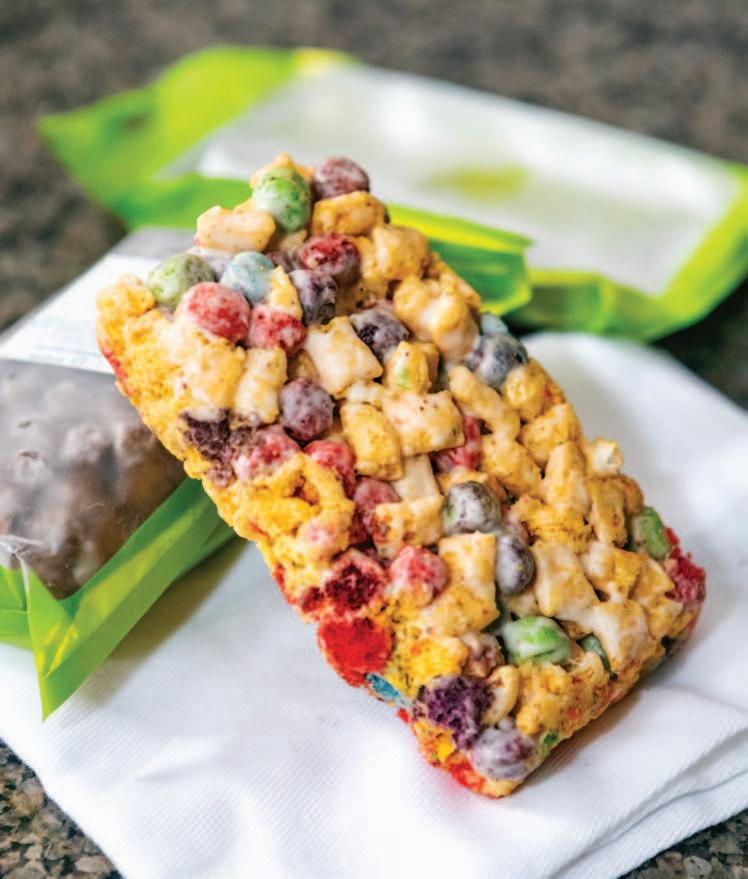
As logistics fell into place, Johnson launched pop-ups and private events. It didn’t take long for her to connect with infused dining pros Snoop Hollins and Denise Winfield-Hollins, and the trio began working together to plan recurring pop-ups in which all of their products shine. Today, they focus on Galactic Wednesdays, a popular monthly event held in Ferguson, Missouri, that was created to normalize and encourage relaxation through infused goods. STL Spacetreats’ products serve as a sweet conclusion to the meal.
Johnson has already crossed off many of her business bucket list items: She has catered events for celebrities, won awards and even been recognized in public by fans. When it comes to the future, she dreams of connecting with local hemp manufacturers to generate products at a higher volume and distribute them commercially as one of the first Black women in St. Louis to do so. For now, it’s reward enough to sit back and reflect on how far she has come. “I love to sit in the nook in my room when the sun is shining … and look at my old set-up, my product presentation,” she says. “Like, you are really doing this!”
STL Spacetreats, instagram.com/stlspacetreats
Anthony Lynch’s program Table for Lou gives North St. Louis youth a chance to grow their cooking skills

On Monday nights, you won’t catch Anthony Lynch unwinding at home after a demanding workday. Instead, he’s teaching cooking classes to kids at Saint Vincent’s in North St. Louis. But, as he’s the first to tell you, he learns just as much from his students as they do from him.
Once an accountant and still in the financial world today, Lynch started working with nonprofits five years ago when his close friend was managing Sudden Impact I.C.U., an organization founded to benefit at-risk youth in St. Louis. After coming on as treasurer, Lynch drew from a lifetime of cooking with his mom and grandma – plus from stints in the food industry – to launch a weekly cooking class for kids. It quickly became one of the most successful programs at The Core Collective at Saint Vincent’s, a supportive housing community that helps kids and young adults in various ways –whether they reside there or live in the city’s surrounding neighborhoods. Opened in 1850, the nonprofit assists in improving access to healthcare and economic equity; it also gives youth the security and safety they need to become leaders in their communities.
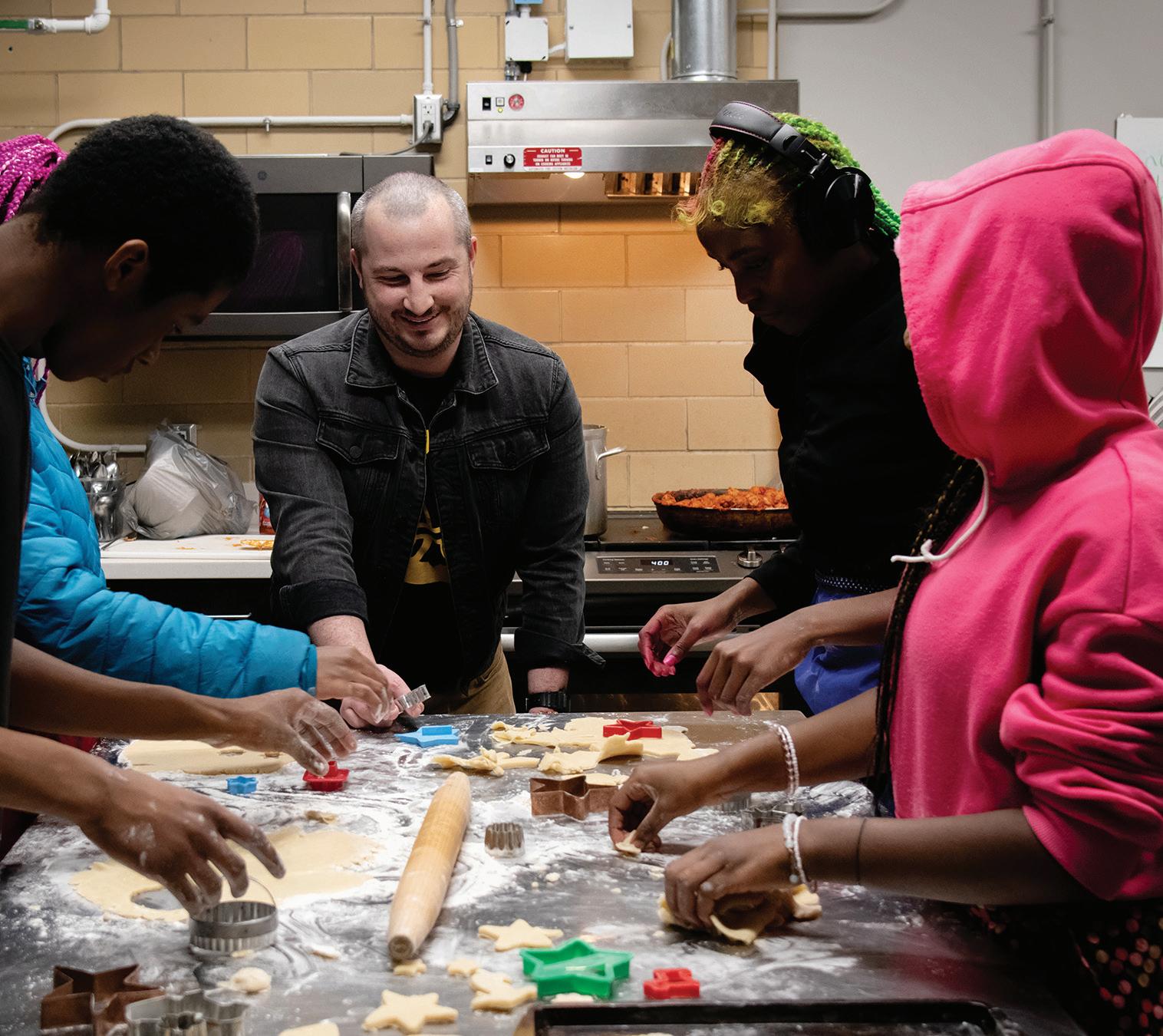
But in 2020, the pandemic caused Saint Vincent’s to shut down much of its programming, including Lynch’s classes. “They were just being cautious about kids being in small quarters,” he says. However, Lynch didn’t have to give up on his labor of love for long: “A year ago, Saint Vincent’s gave me a call and said, ‘Hey, we really loved your program – are you still interested in teaching the class?’ I immediately jumped on it.” Once again able to provide a service at Saint Vincent’s, Lynch resurrected his same Monday night classes
Lynch sees it as a chance for the kids to learn much more than cooking techniques. “We definitely want to educate, but it’s not really like a home economics class where we’re going over cups and tablespoons,” he says. “That comes up naturally and organically, but I figure the kids have been in school all day, so I think of it more like a team sport. They don’t have to do anything they don’t want to do; usually, we just divvy up the tasks. I say, ‘Who wants to do X? Who wants to do Y?’ It’s pretty wonderful.”
It’s also a social experience; Lynch’s students invite their friends to join and come and go as they please. Classes are built to accommodate 15 participants, but they often spill over – the demand is just that high. “I always want to be able to feed everyone at the facility, so we tend to bring food for about 30 people,” Lynch says. Together, Lynch and his students make meals that include a main course, a dessert, and a side like salad or something that can go in the air fryer. It’s simultaneously fun and
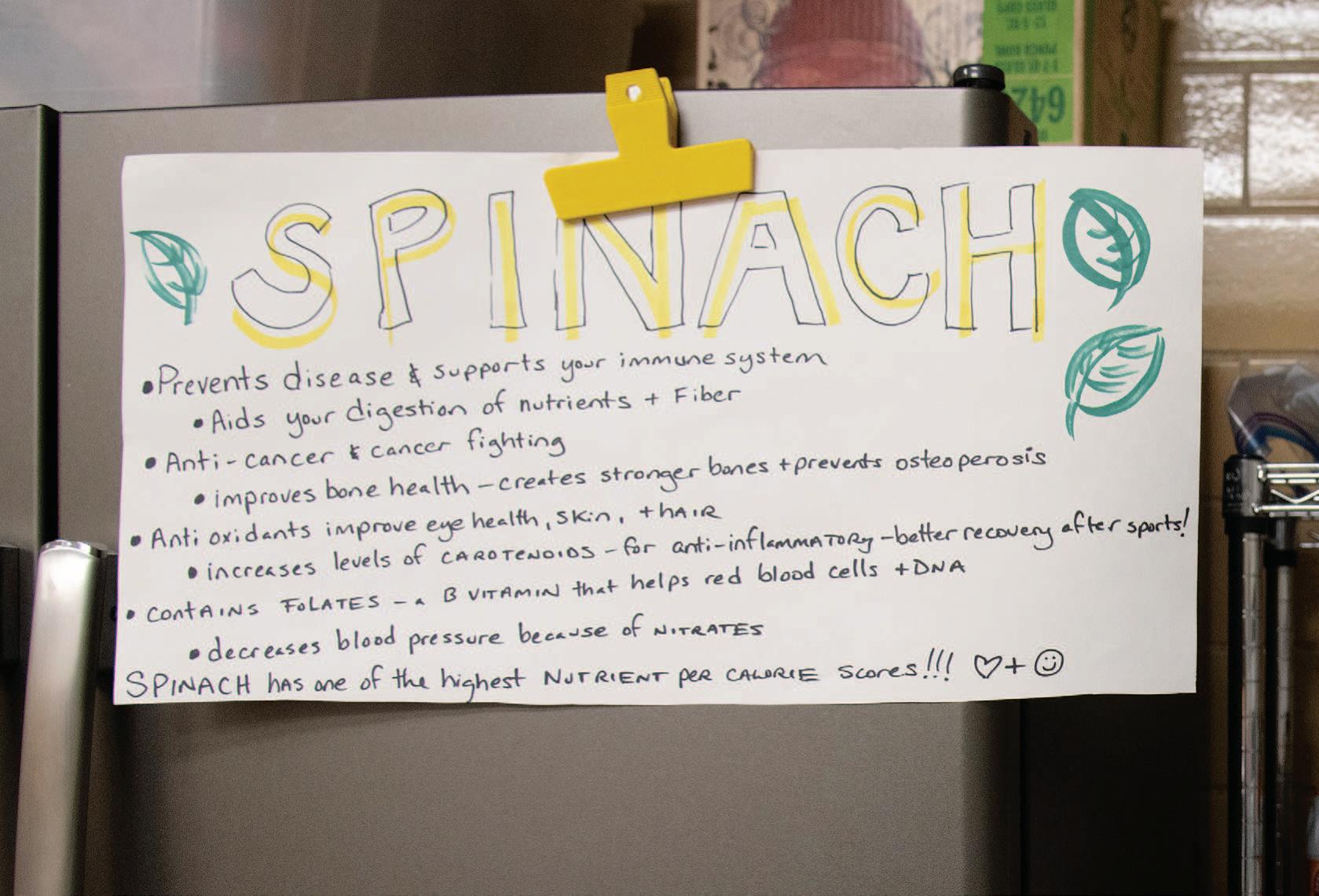
We try to make the food very hands-on, but I still want any skill level to be able to participate.

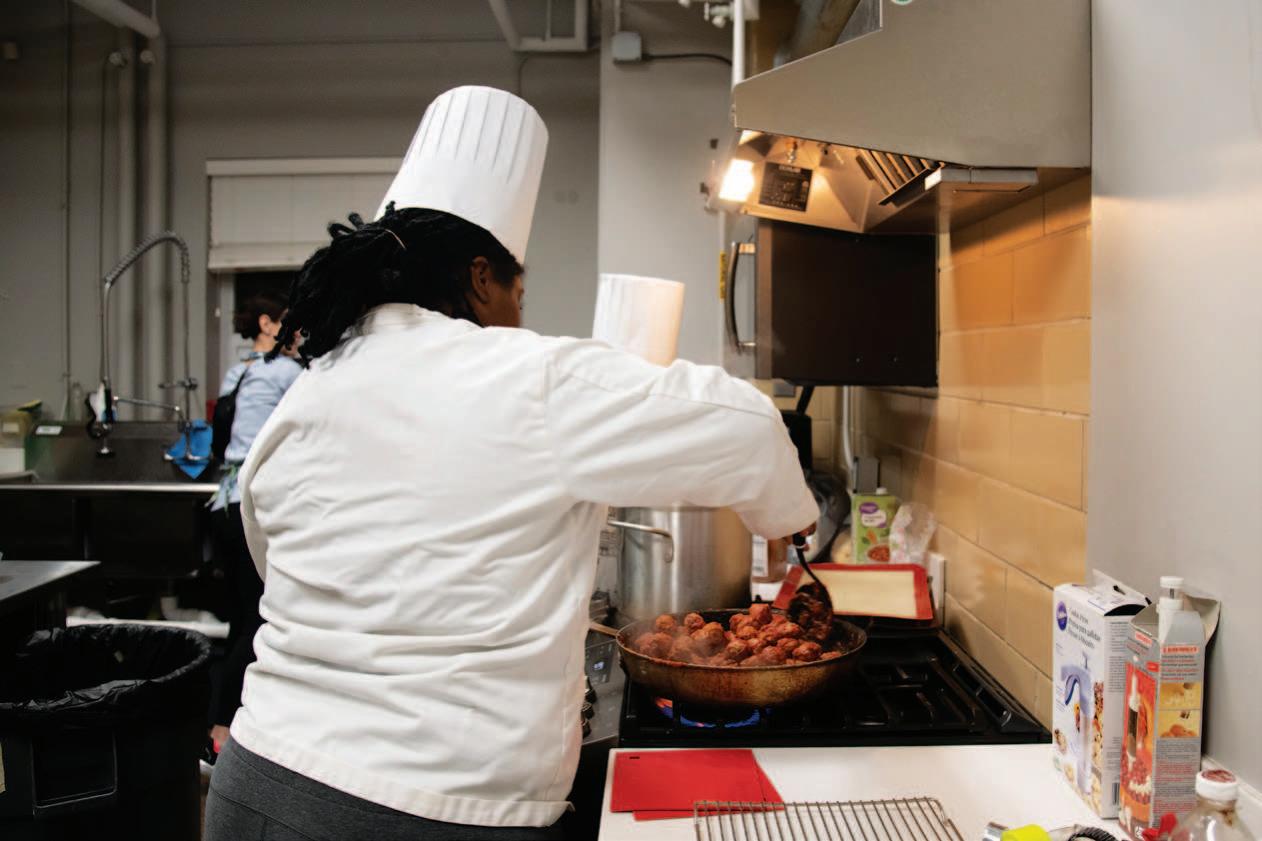
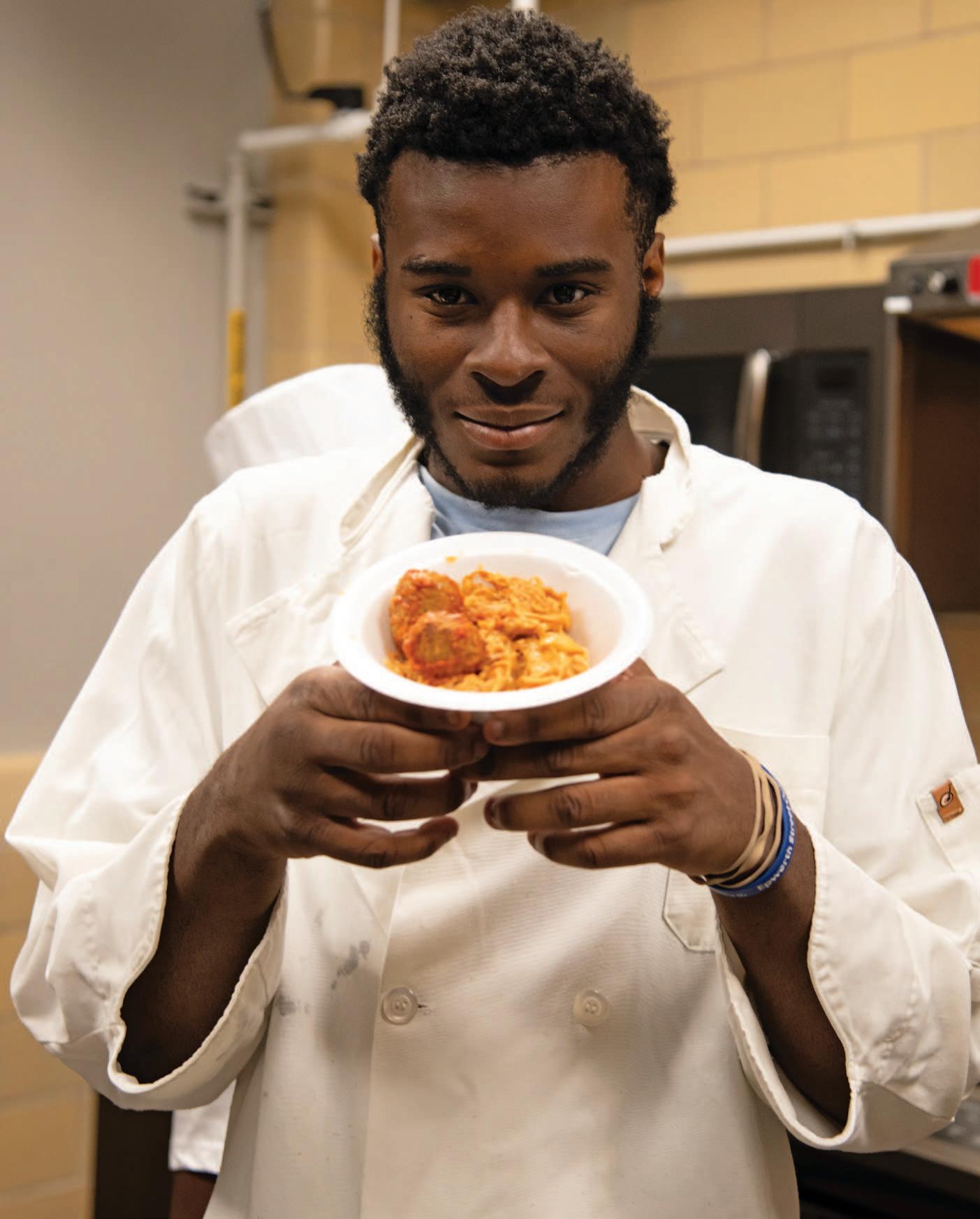
informative. “We try to make the food very hands-on, but I still want any skill level to be able to participate,” Lynch says. “What we’ve learned in the past few months is that kids really like elaborate desserts. They love focusing on making things pretty. We made fruit pizza recently, and the amount of energy and art they put into it was incredible.”
FoodforThought
Whenhe’snotteaching cookingclasses,Lynchalso makesanddeliverspansoffood toSt.LouisChildren’sHospital intheCentralWestEnd. Tohelpwithhiseffortsthere,orwith TableforLou,visittableforlou.org, sendfinancialsupportifyoucan,or considervolunteeringtime.
Lynch also tries to make the food healthy without going too far outside of the kids’ comfort zones. “I want to make sure the food is down to its core elements, so the kids can see what’s actually going into the meals they’re eating,” he explains. For instance, Lynch tries to include vegetable-heavy dishes that might look unfamiliar, breaking them down into individual components. This approach makes it easier for the kids to try things they’ve never had before. Lynch recalls one moment in which the class was preparing a broccoli salad. “The girl who was chopping it up was saying, ‘You know I’m not going to eat this, right?’ And she ate it,” Lynch says. “She loved it. I can tell them all day long that something is good, and they won’t believe me. But they’ll believe their peers.”
Perhaps best of all, Lynch’s classes allow students to control their own narratives and destinies. He says Table for Lou’s older students come back time and time again, reserved at first but soon eager to teach younger students how to excel. This collection of kids already has what it takes to change the world – Lynch just helps them evolve their existing skillsets, little by little. “We’re teaching them how to feed their community,” he adds. “They’re learning how to cooperate with each other. It’s a beautiful thing.”

Henry (picturedright)
History ofpolyps –Routinescreenings
No cancerfound
Coloncancerscreening




Youtouchlives. Yougive smiles. Youare someone’s favorite person. Yourhealthmatters.
Henry’s wife Maureenis aretiredhealthcare workerandan advocateforproactive screenings. Sheconvinced Henry toget aroutinecolonoscopy a fewyearsagoandsomenon-cancerous polyps were discoveredand removed.Knowinghewashealthy gaveHenry peaceofmindand a spiritoffreedomtoenjoy a carefreelifein retirementwithhiswifeandfamily.It also inspiredhimtocontinuehis routinescreeningstoensurea healthy, happyfuture.
Fouroutof10adultswilldevelopcancerintheirlifetime,but screeningtestscancatchcancerearlyandhelpsave lives. Give yourselfandthosewholoveyoupeaceofmind,schedule a routinecancerscreeningandtakecontrolof yourhealthtoday
To see Henry’s story andtolearnwhichcancerscreenings mightberightfor youandtoscheduleanappointment, visit getscreenednow.com orcall 314-310-7574.
Forthelives youtouch.














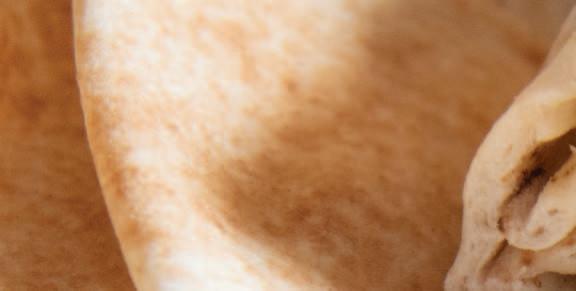






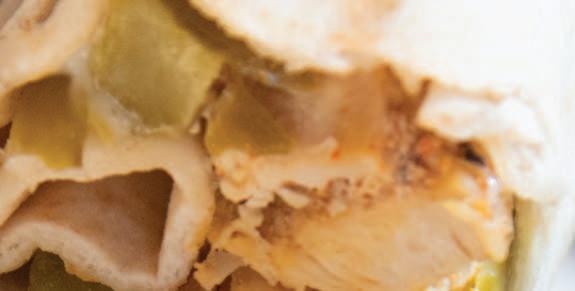
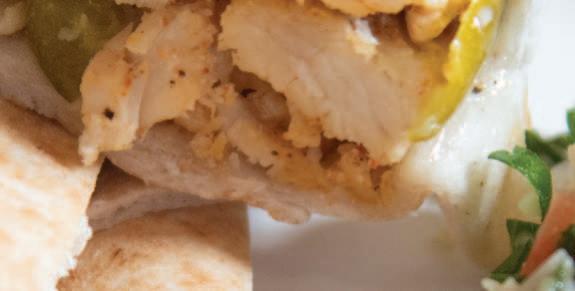
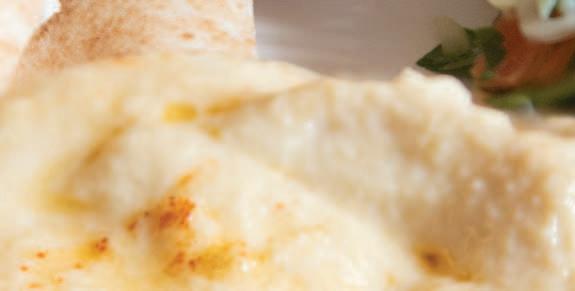





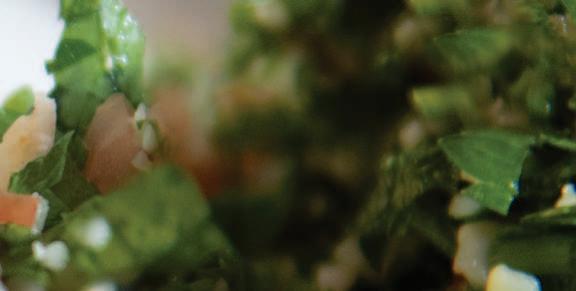






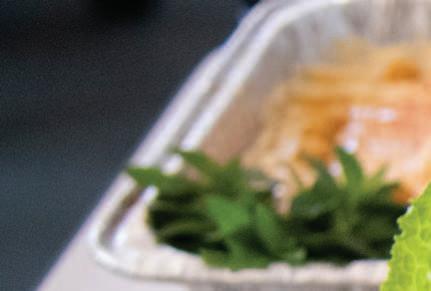

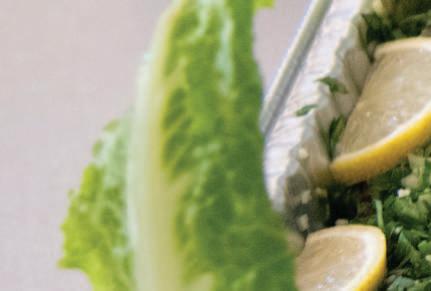




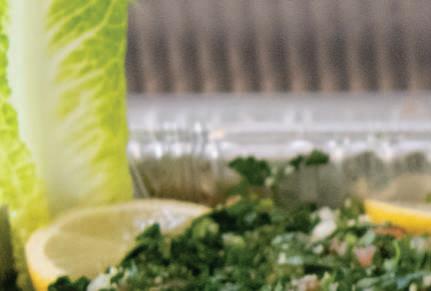

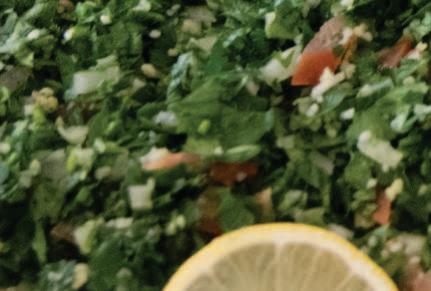


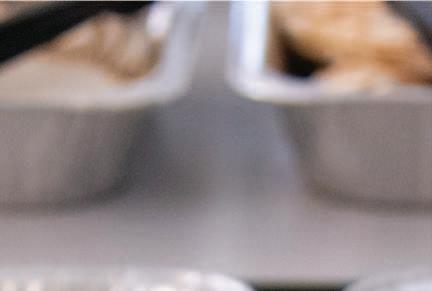
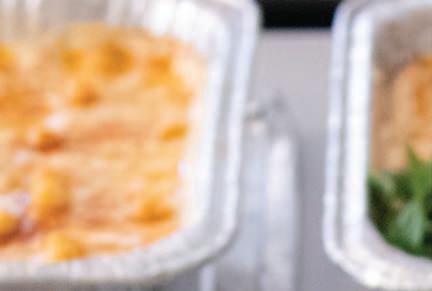





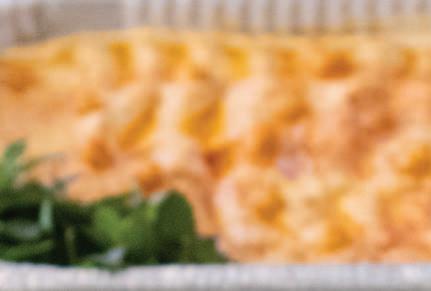
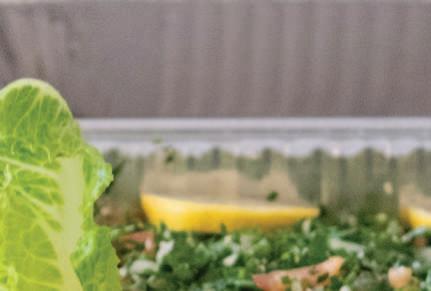
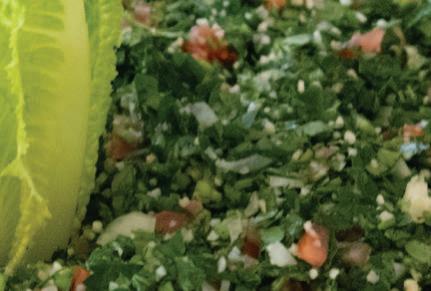



When Ayman Almalla and Ghaida Al Masrabi immigrated to St. Louis in 2016, they were thrust into an unfamiliar world without any of the comforts of home. “The summer we came here, we didn’t know anyone; no friends, no language … we left our families,” Almalla says. “That makes it so hard.” Their situation is similar to that of many refugees, and it’s one that local nonprofit Welcome Neighbor STL wants to help reconcile through its Supper Club program.
Hailing from Afghanistan and Syria to Morocco and India, the Supper Club’s refugee chefs cook the food of their home countries at regular dinners, events, festivals, cooking classes and drivethru meal pickup events. The program empowers refugees by providing them with financially stable jobs and the means to share their culture with their new communities. It’s also a way for refugees to link back to the culture they left behind. “I love food –I love cooking,” one of the refugee chefs, Mawda Altayan, says. “I learned cooking from my mom and my grandmother. I’ve always loved to cook and share food with my friends, and I love this job because it's like part of my personality.”


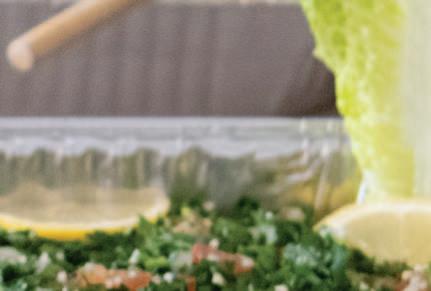
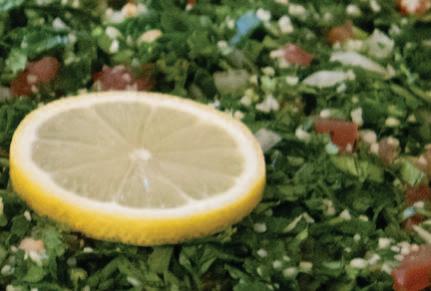
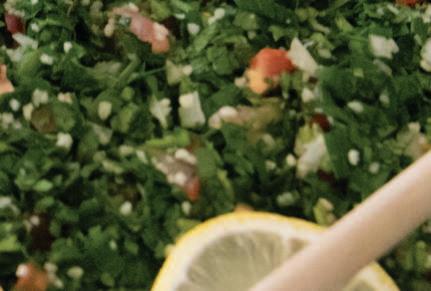


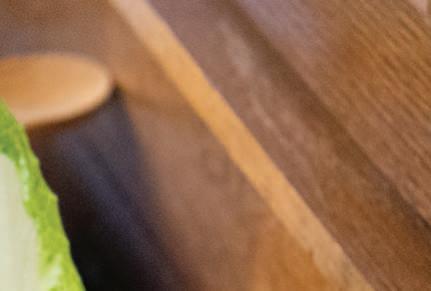

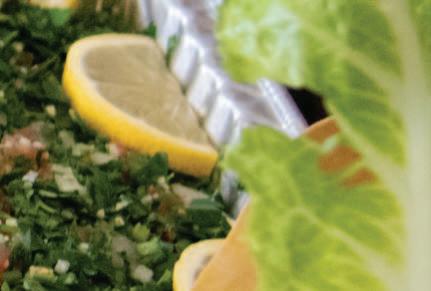
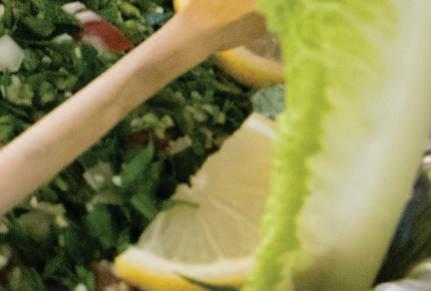







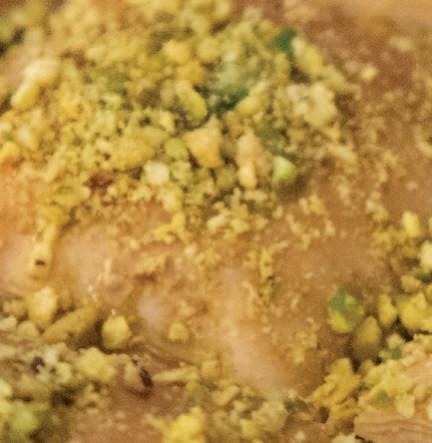




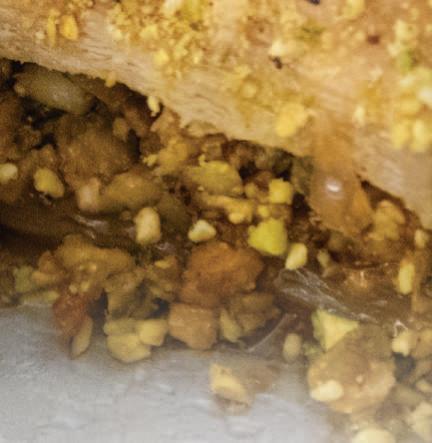


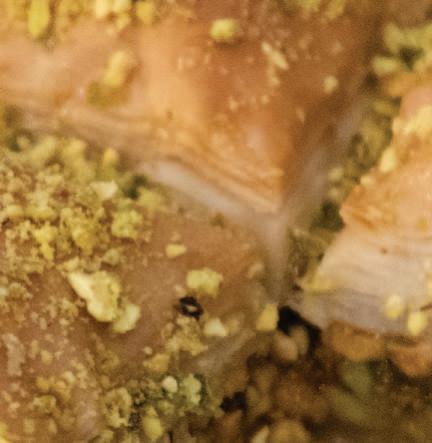


When Altayan and her husband Mohi Aldeen Alhamowi first came to St. Louis from Syria, they were in the same boat as Almalla and Al Masrabi and knew little English. Altayan soon connected with Jessica Bueler, director of Welcome Neighbor STL, who helped her begin learning the language. “She was like an angel,” Altayan says. As a thank you, Altayan invited Bueler for a traditional Syrian dinner. “[Bueler] loved the food, and she said, ‘Let’s turn this into a job for you.’” After gaining experience as a part of the Supper Club, Altayan and Alhamowi launched their own catering business, Damascus Food. By way of Damascus Food and the Supper Club, the pair brings dishes like kibbeh (spiced ground meat, onions and grain), tabbouleh (parsley, tomatoes, bulgur wheat and green onions), hummus, chicken shawarma sandwiches and grape leaves to St. Louis. “This way, we can help [refugees] become independent, especially financially, so they can [raise] their families here,” Supper Club coordinator Zohra Zaimi says. “Also, most of them still have families overseas, and they need help.”

Altayan and Alhamowi aren’t the Supper Club’s only success story. Al Masrabi and Almalla, who

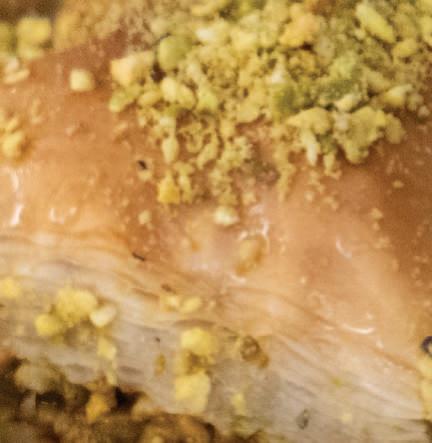
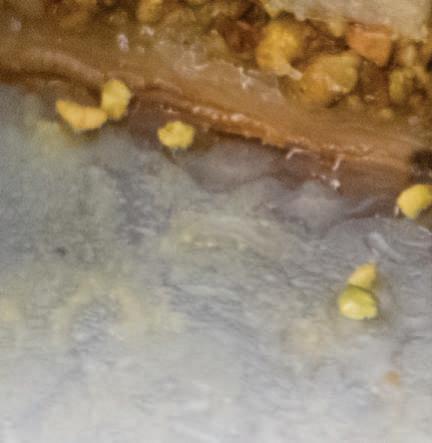






owned a butcher shop in Syria, have now launched the catering business Wafa Foods LLC (named after their daughter), and they plan to open a brick-and-mortar in the future. They specialize in Syrian and Egyptian flavors, the latter of which they picked up after being relocated to Northern Africa from Syria in 2012. Even Zaimi herself, who additionally serves as the Moroccan chef for the Supper Club, has benefited from the program; she launched her baking business, Zohra’s Moroccan Bits N’ Bites LLC, last year. “It started small, and it’s grown,” Zaimi says. “The organization is growing with the immigrants, and the immigrants are growing with the organization.” Currently, the Supper Club can serve food for up to 300 people.
Supper Club coordinator Zohra ZaimiThe program also gives refugees a way to form relationships with the local community and vice versa. Through the Supper Club and Welcome Neighbor STL’s Family Partners program, refugees meet and bond with local families and friends while offering up a glimpse of their history and culture. “When the chefs are at the Supper Club, it’s not only about cooking and serving people,” Zaimi says. “They are here at events and dinners sharing their stories with the guests, and the guests are asking questions.” Because many of the chefs’ friends and families still live across the globe, this point of connection is invaluable for welcoming refugees to St. Louis. “They give us so many chances to enter this community, and I feel now that this is my home,” Altayan says. “This is my entry. I got my citizenship this year, and I'm very grateful for that.”
Another way refugees get involved with their new home is by giving back to those in need. Every other Friday, the refugee chefs cook meals for 100 unhoused St. Louisans as a part of Welcome Neighbor STL’s Unhoused Meals program. For Altayan, this act of kindness is just one way to reciprocate the support she’s felt from the St. Louis community. “I'm very happy that we found this small way to give back to the community because the community helped us from the beginning.”
To attend one of Welcome Neighbor STL’s Supper Club dinners or request its catering services for an event, visit welcomeneighborstl.org/supper-clubs.
When the chefs are at the Supper Club, it’s not only about cooking and serving people. They are here at events and dinners sharing their stories with the guests, and the guests are asking questions.
– ZOHRA ZAIMI
Established in 2016, Welcome Neighbor STL puts forward a variety of initiatives that help refugees adjust to life in St. Louis. To learn more and donate to its cause, visit welcomeneighborstl.org.
English as a Second Language
Welcome Neighbor STL provides in-home, volunteer-driven ESL tutoring for refugees. The program currently includes 42 students and 30 volunteer tutors.
HumanKIND STL
HumanKIND STL helps refugees figure out the logistics of starting life in a new country. These projects include everything from registering for school and taking trips to the grocery store to finding a job and gaining reliable transportation. As of November 2023, HumanKIND STL has purchased 36 cars for refugee families.
According to Welcome Neighbor STL, families facing displacement are at a higher risk of depression, PTSD and anxiety. The Mothers Support Group aims to support mothers – often the primary caregivers in refugee families – socially, mentally and emotionally to help set a stable foundation for the family’s wellness.
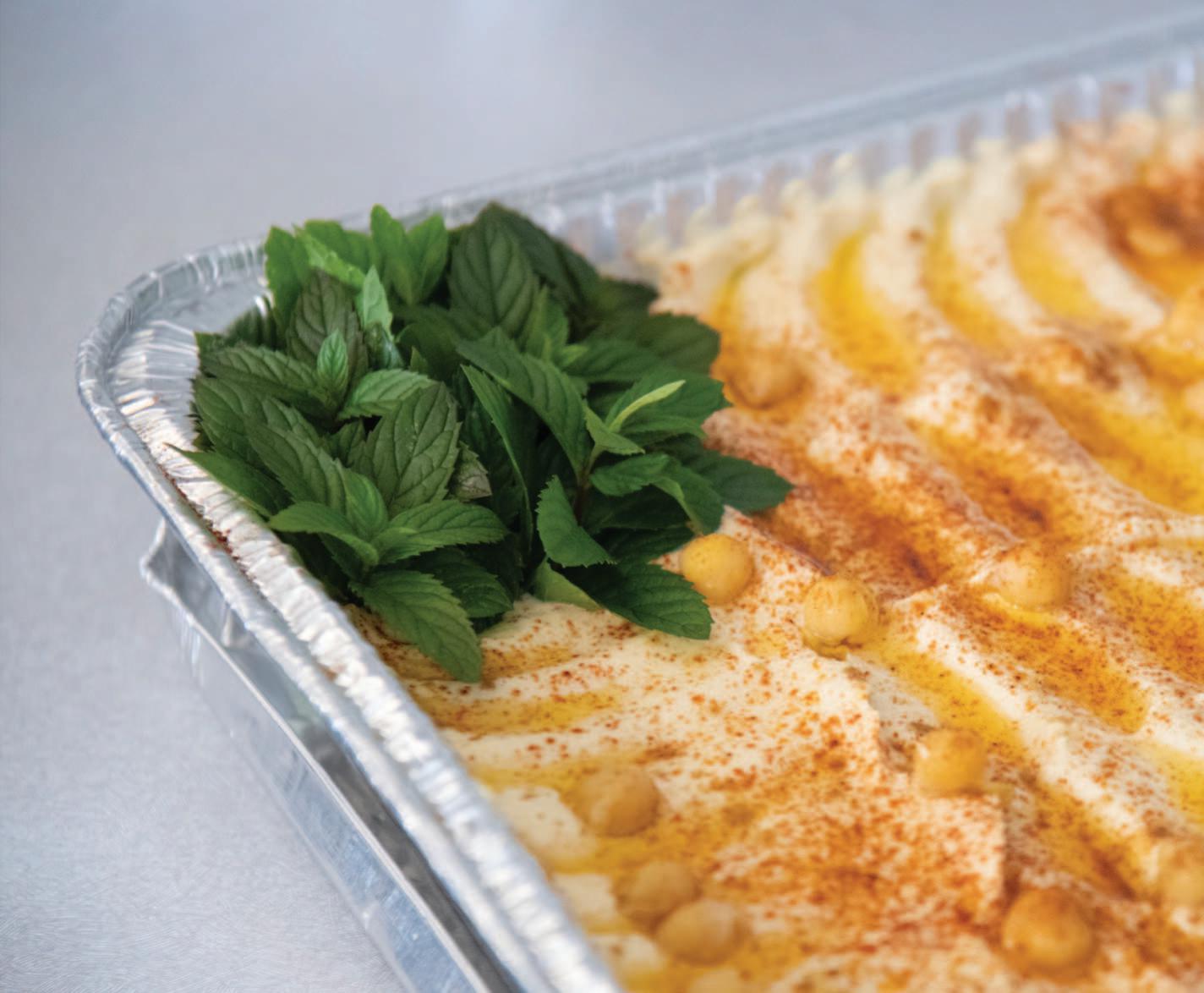
Although he tends to stay in the background, Jonathan Lorentzen is everywhere, whether he’s making your favorite smash burger at Farm Spirit’s farmers market stand, cooking over live fire at Such and Such Farm, or slinging drinks with STL Barkeep. Read on to get to know this jack-of-all-trades.
What’s your favorite vegetable?
I really like beets. I think they’re really powerful; they’re earthy, sweet and very intense because of the color. In all these years as a chef, I’ve roasted, pickled and dehydrated them – all these things to make them palatable for people. But I grabbed a beet from the fridge recently … I cut it and looked at the cell walls and let the juice stain my hands, and it was a moment of appreciating it for what it is.
What’s the most underutilized spice or condiment?
Probably mustard. It’s really flexible and cool, especially when you pop mustard seeds in oil. I was exposed to blooming and toasting spices very early on, and I love blooming black mustard seed, curry leaf and sambal together and then making a soup with it.









Who is your favorite animal at Such and Such?
It has to be Homie, the dog. He’s the coolest dog – a chunky boy – and he greets me every day at work.
What are you listening to right now?














I’m a big house music fan. I like French house and global house and things like that. Drums and bass, a lot of R&B – I really like The California Honeydrops – and different types of Latin music. I just have so much respect for different global music scenes in general. Ryan [McDonald, Farm Spirit chef-owner] has gotten me into gypsy jazz recently.


You’re a musician; what do you play?
I’m left-handed, and I really love playing the drums and guitar. I play drums left-handed and play guitar righthanded. I got a digital piano and just started playing.













































